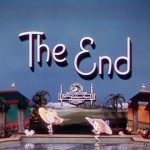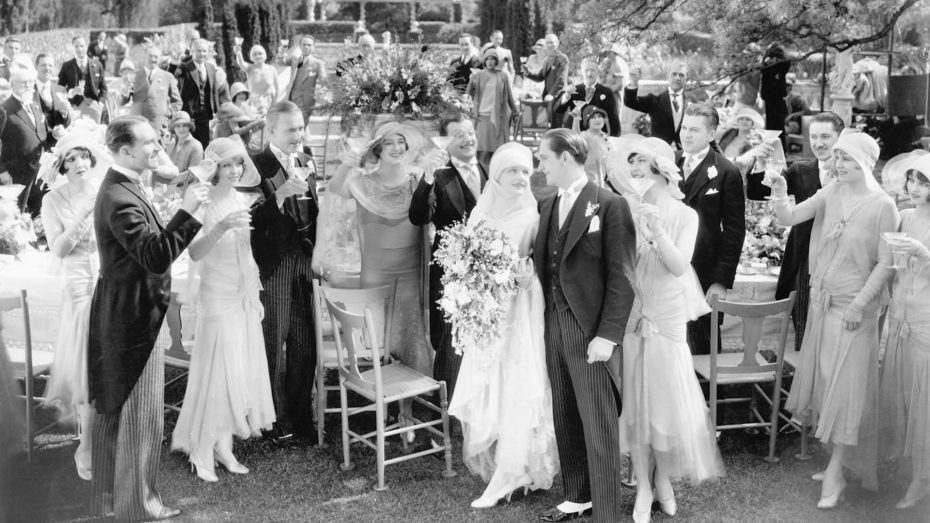
A century ago, the world was recovering from the deadliest pandemic in modern history. Post-Spanish Influenza and post-World War I, no other decade in history can match the change and innovation brought forth by the 1920s. Things were changing fast – new and impressive lines of communication were opening up, with new fangled inventions such as telephones and automobiles. The economy boomed, social and cultural dynamism flourished, women gained the right to vote and to be seen as their own entities, while moving pictures miraculously began to talk. Large cinemas, sport stadiums and sensational new radio stations encouraged a new element of celebrity that the general public quickly became hooked on, a pattern that is still very much a part of society today. And what comes with a sense of celebrity is a fascination in everything they do, particularly the weddings they held, all on a scale that the Great Gatsby himself would applaud…

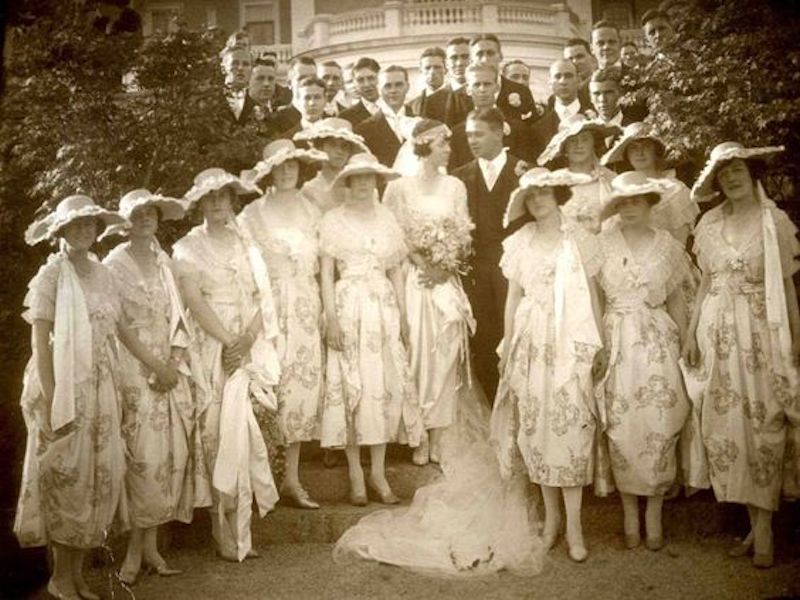
You can thank the 1920s for the wedding industry as we know it, which began evolving into a capitalist industry as mass prosperity surged and the overcoming of war and disease called for a time of celebration. The wedding registry was invented by an American department store in 1924 and many practices that are now considered traditional were developed during this time as lavish celebrity and society weddings set the standard.
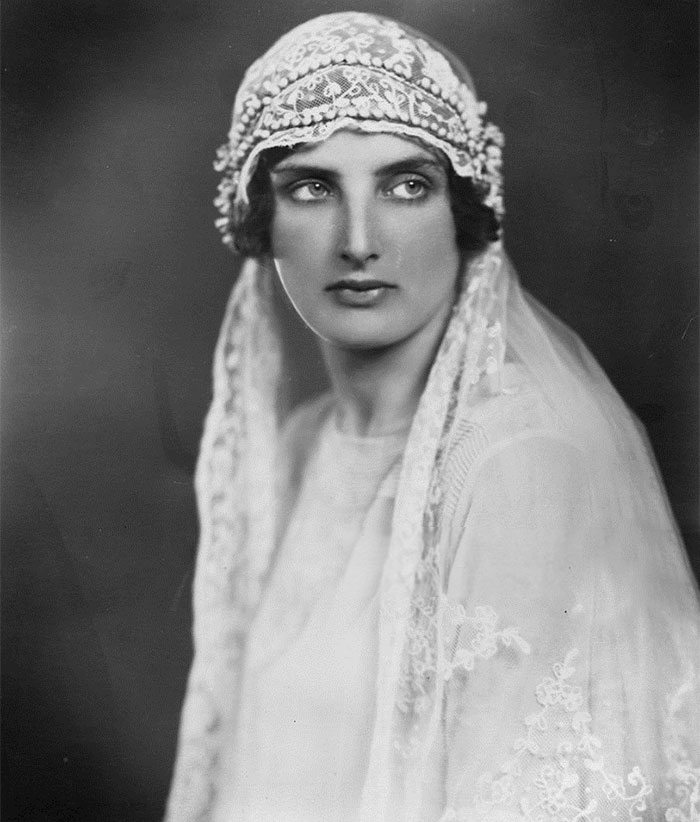
Twenties brides wore dresses that mimicked the trends of the time (and befitted the social and economic status of her family) — dropped waists, ornate beading on the dress’ bodice, and Juliet headdresses. Expensensive dresses were made of exclusive fabrics in rich colors, set in layers of velvet or silk while industrialization brought easily available and cheaper fabric to wider society. With the advancement of communication networks and a more efficient postal system, even the most isolated working-class women try to capture the latest fashion trends.
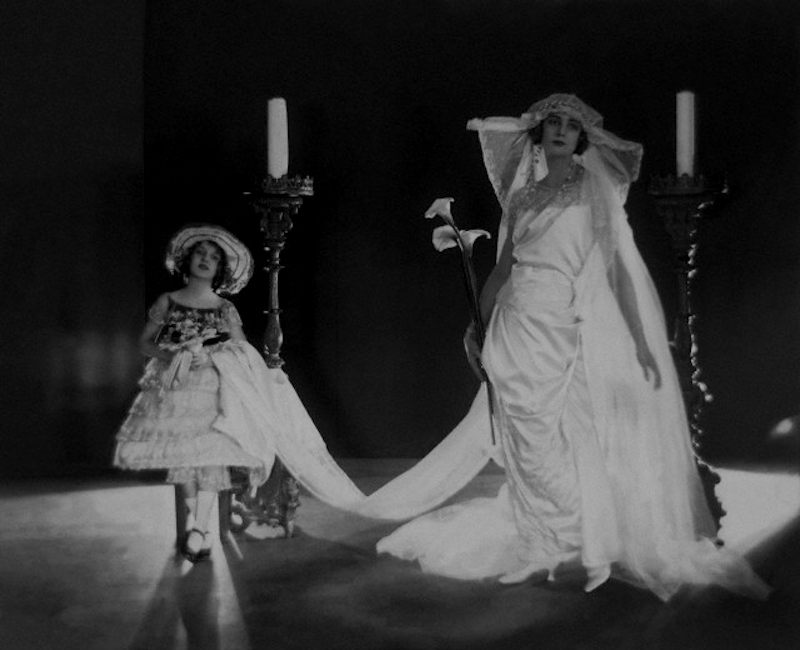
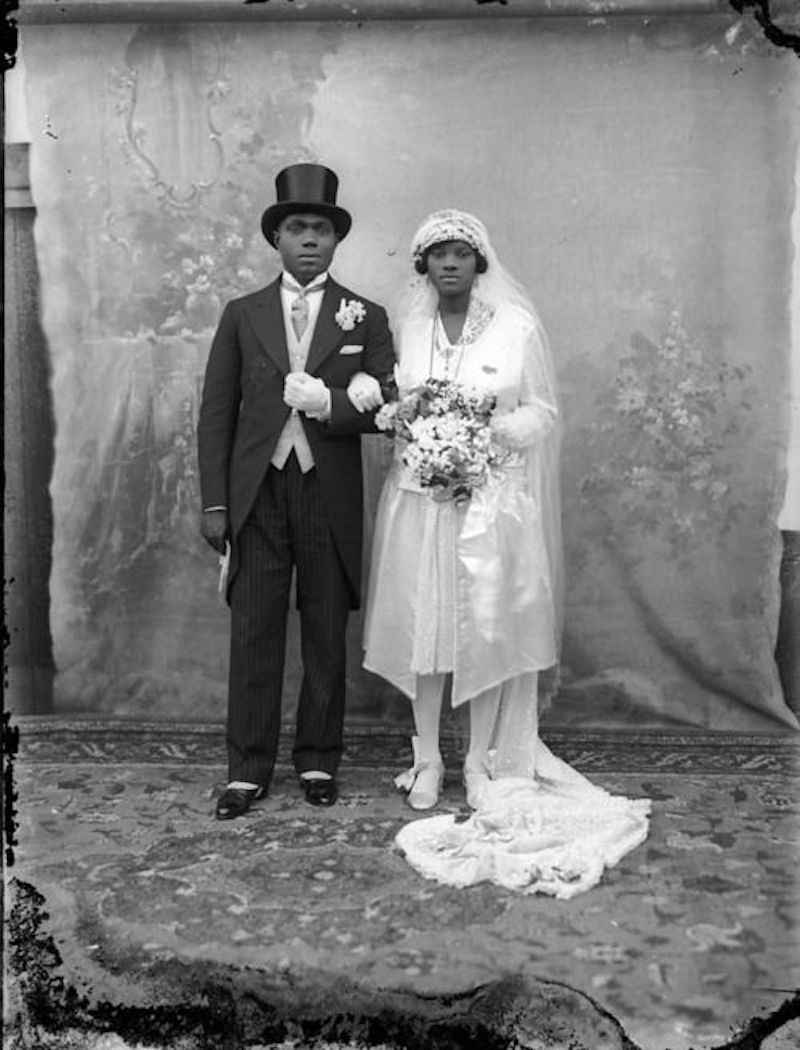
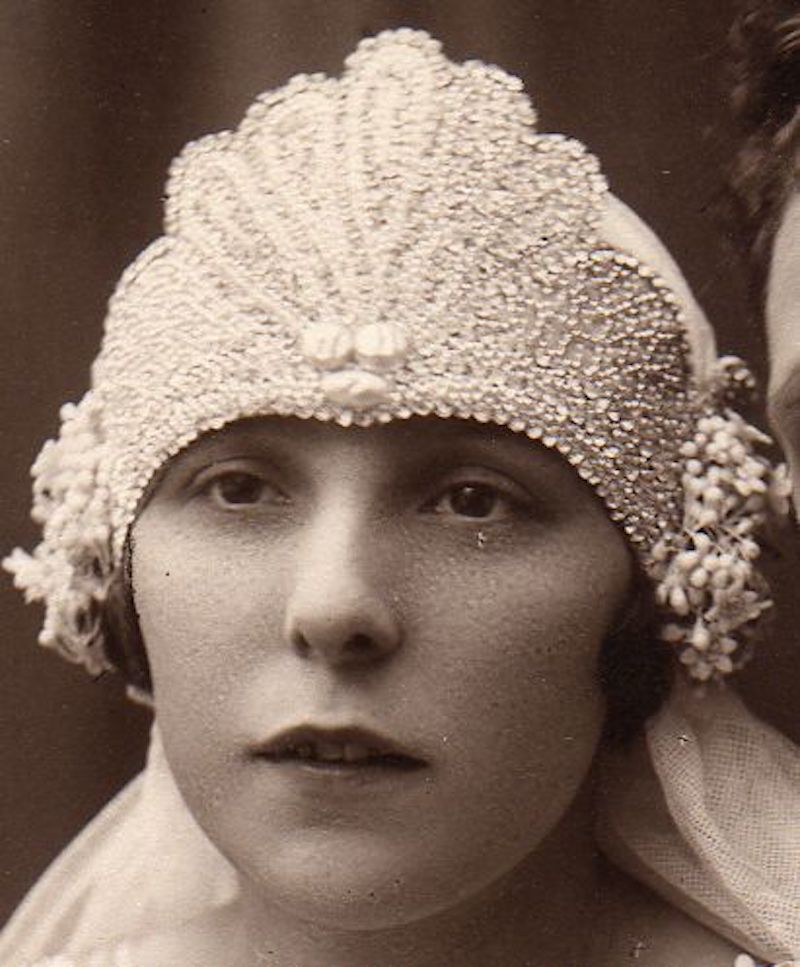
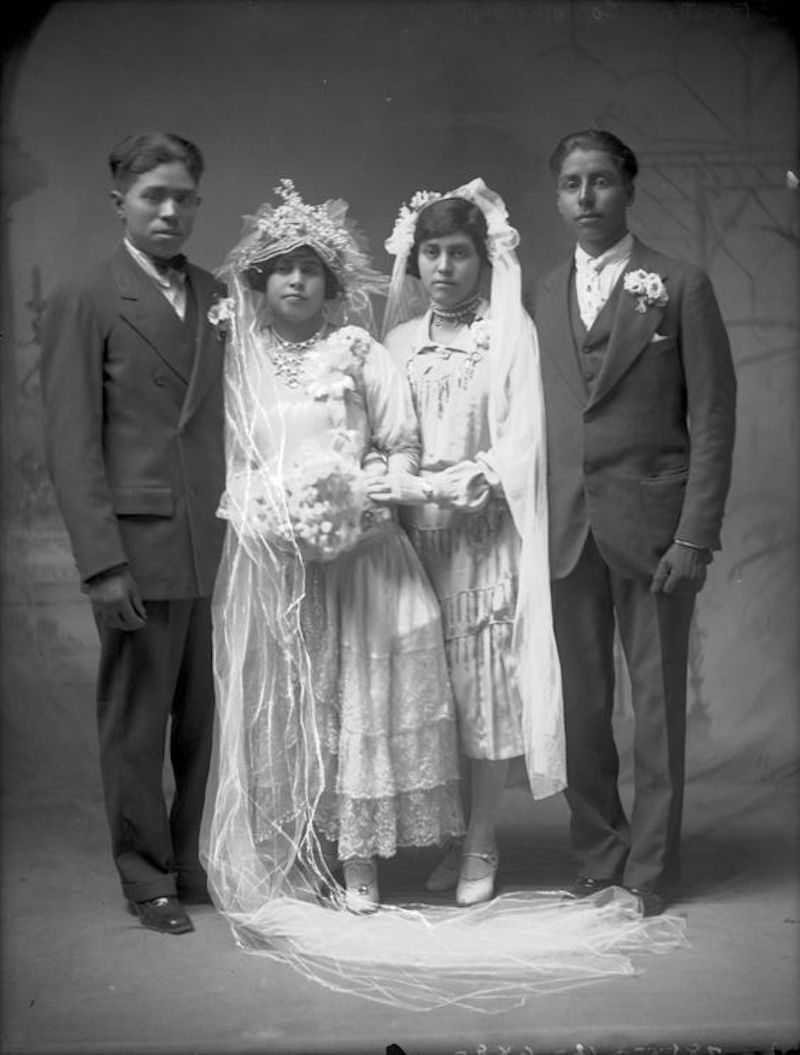
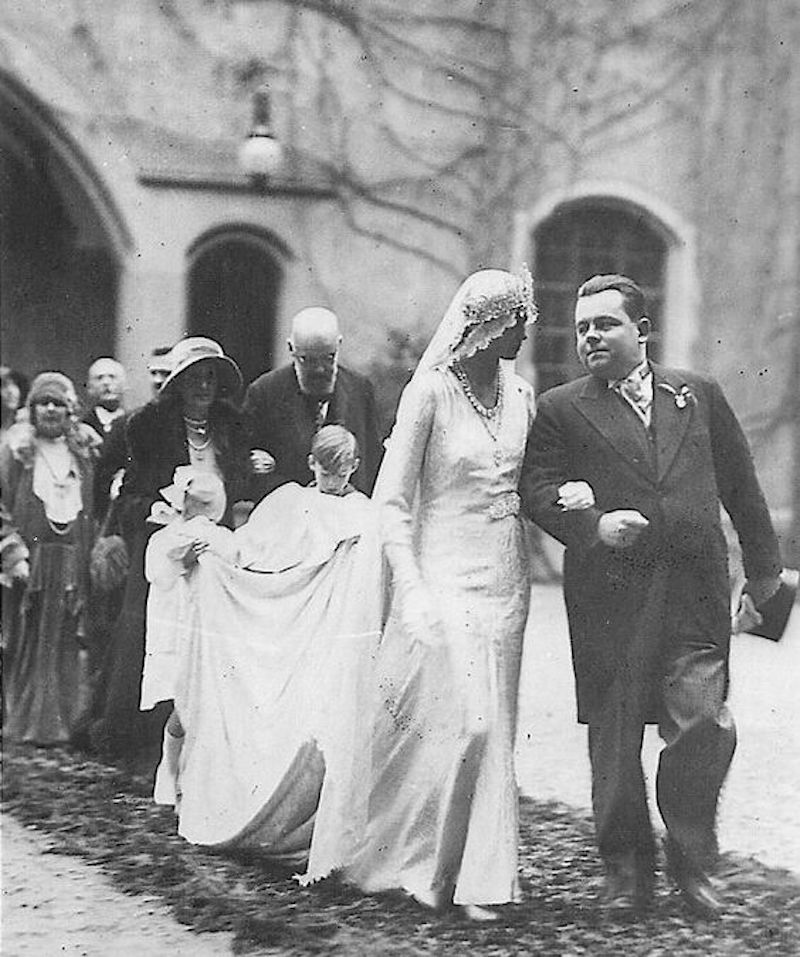
So while we lament the cancelled weddings in 2020, hoping that our own Jazz Age of renewed celebration might be around the corner, we thought we’d whisk ourselves back 100 years to crash a few society weddings of the Roaring Twenties…
Cornelia Vanderbilt & John Cecil
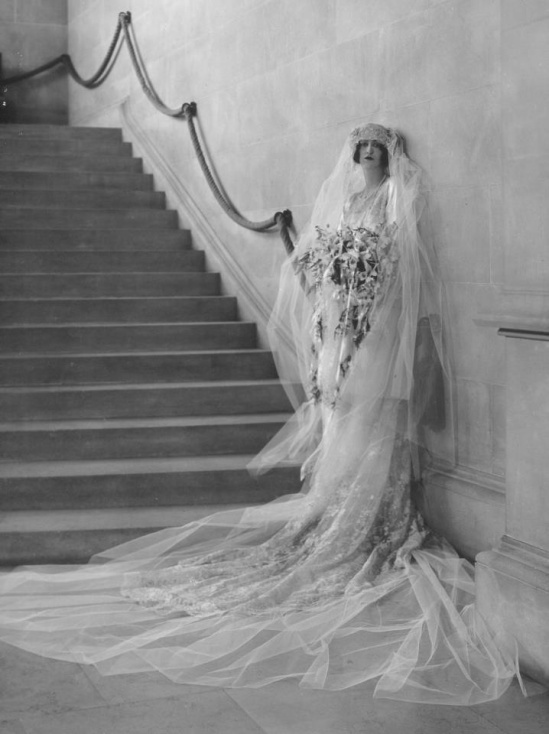
Arguably the wedding of the decade, Cornelia, heiress to what is still the largest private residence in the U.S. (a home containing 250 rooms set in 125,000 acres in North Carolina), married British aristocrat John Cecil in 1924. A wedding that was, in essence, the first almost-royal wedding in America. The ceremony was 500 people strong with a guest list of over 2,500 people, all descending upon the palatial Vanderbilt residence, Biltmore House.
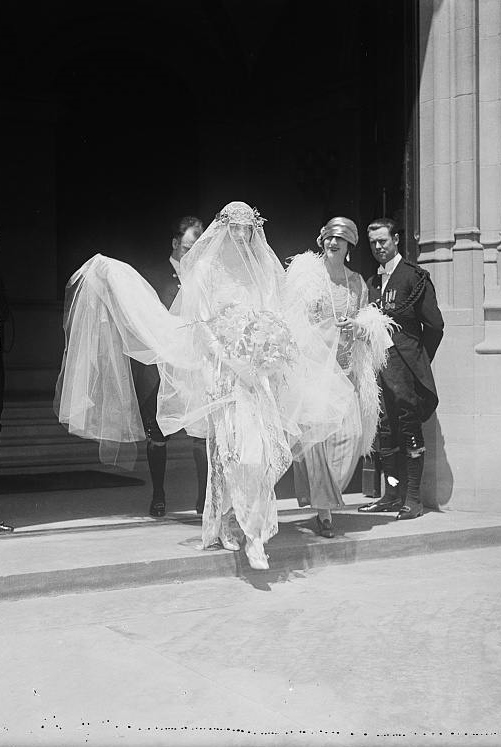
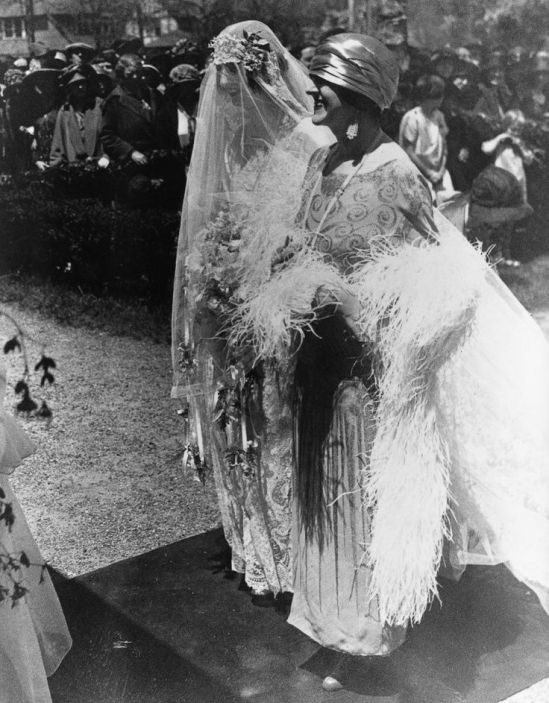
While the marriage sadly did not last, (with Cornelia abandoning her family home to dye her hair pink and study art in New York under the name Nilcha) the wedding will go down as one of the most lavish affairs in the history of the Roaring Twenties.
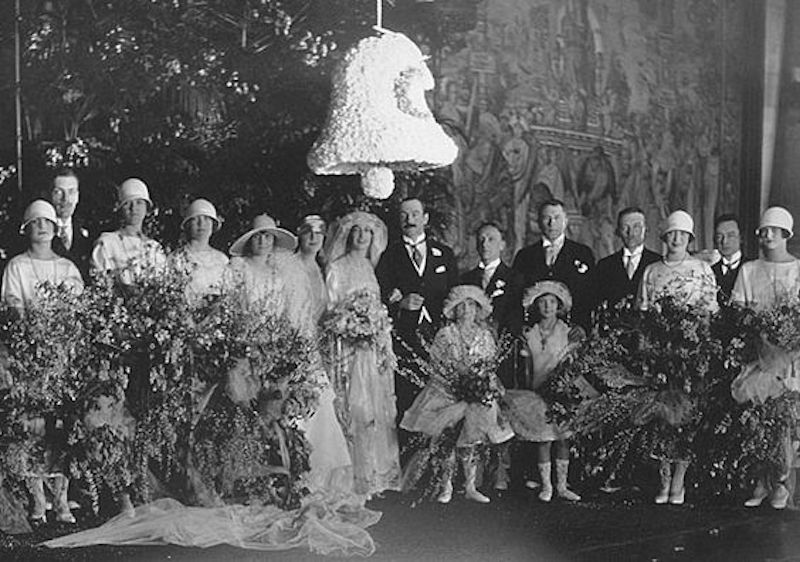
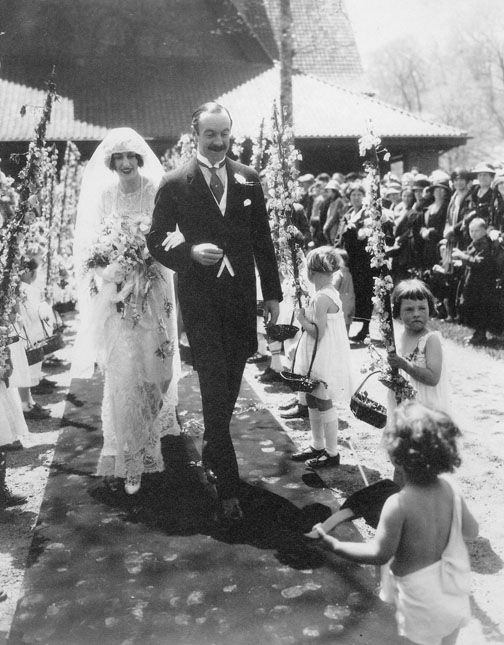
Mary Pickford & Douglas Fairbanks Sr
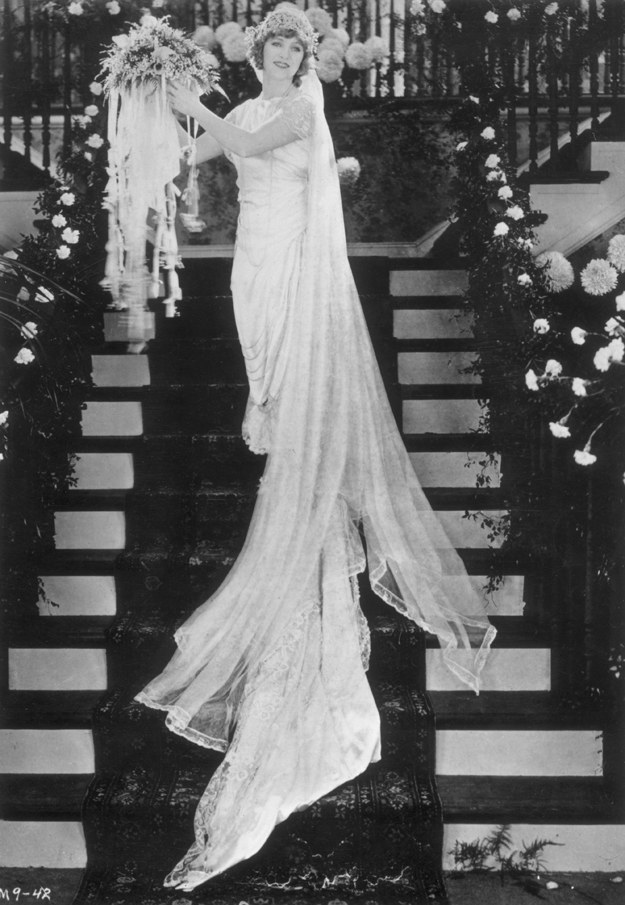
Perhaps some would argue though, that the “Wedding of the Century” had already occurred 4 years prior to Cornelia & John tying the knot. In 1920, Mary Pickford, one of the biggest female movie stars of the silent era, joined hands and forces with fellow thespian, Douglas Fairbanks Sr, swashbuckling star of the silver screen. They were immediately dubbed “The King and Queen of Hollywood”.
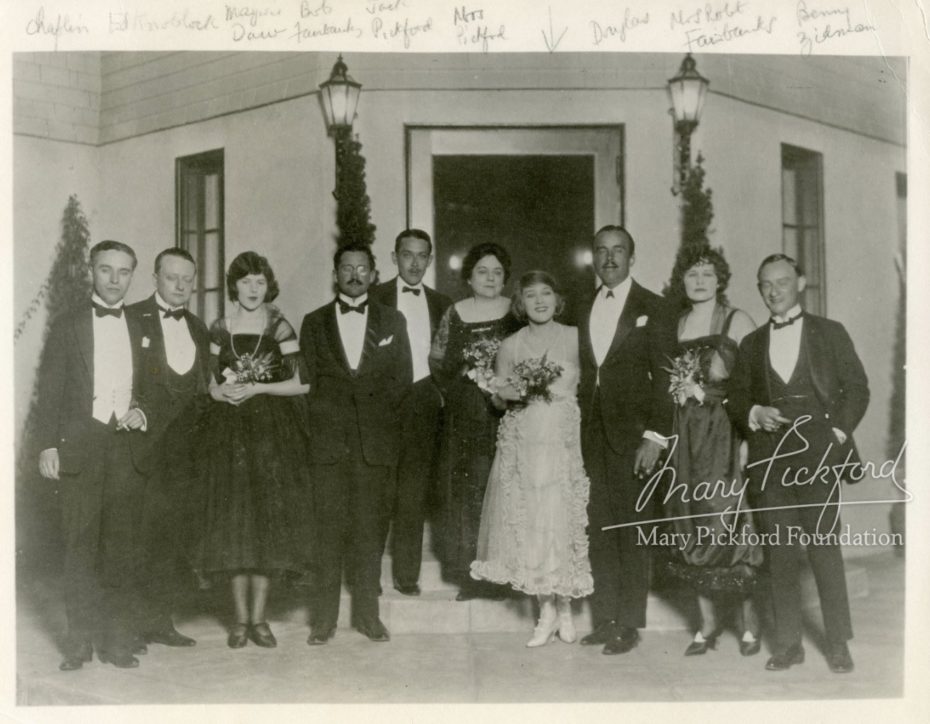
Their home may not have been as large as Cornelia & John Cecil’s, but what it lacked in size it made up for in prestige. An invitation to “Pickfair”, the couple’s sprawling estate in Beverly Hills, was said to be “a sign of social acceptance into the closed Hollywood community” as you were almost certain to rub shoulders with the likes of other celebrity behemoths of the time, such as Charlie Chaplin, Greta Garbo, Albert Einstein, F. Scott Fitzgerald, Arthur Conan Doyle, Amelia Earhart and President Roosevelt! Life Magazine described Pickfair as “a gathering place only slightly less important than the White House… and much more fun.”
Mary & Doug’s marriage was a private affair, having been held just days after Mary’s divorce from her first (and violent) husband came through, attended only by their nearest and dearest. No images exist of the actual wedding day, but quite often in the 1920s the bride and groom would dress up in their wedding fineries in the days following the wedding to pose for a photographer in a studio or similar setting. Photography back then was a lot less portable!
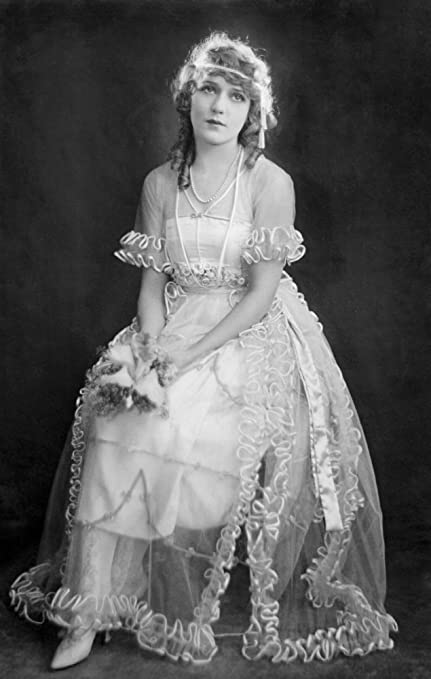
Mary’s wedding dress may not have been purchased specially for the occasion, as she had been pictured wearing it in a photoshoot prior to their wedding. She actually wore her wedding dress again multiple times; once for a studio portrait session as a gift for her husband Douglas, and once as a bridesmaid for her own brothers wedding in 1922.
Gladys Deacon & Charles Spencer-Churchill, 9th Duke of Marlborough
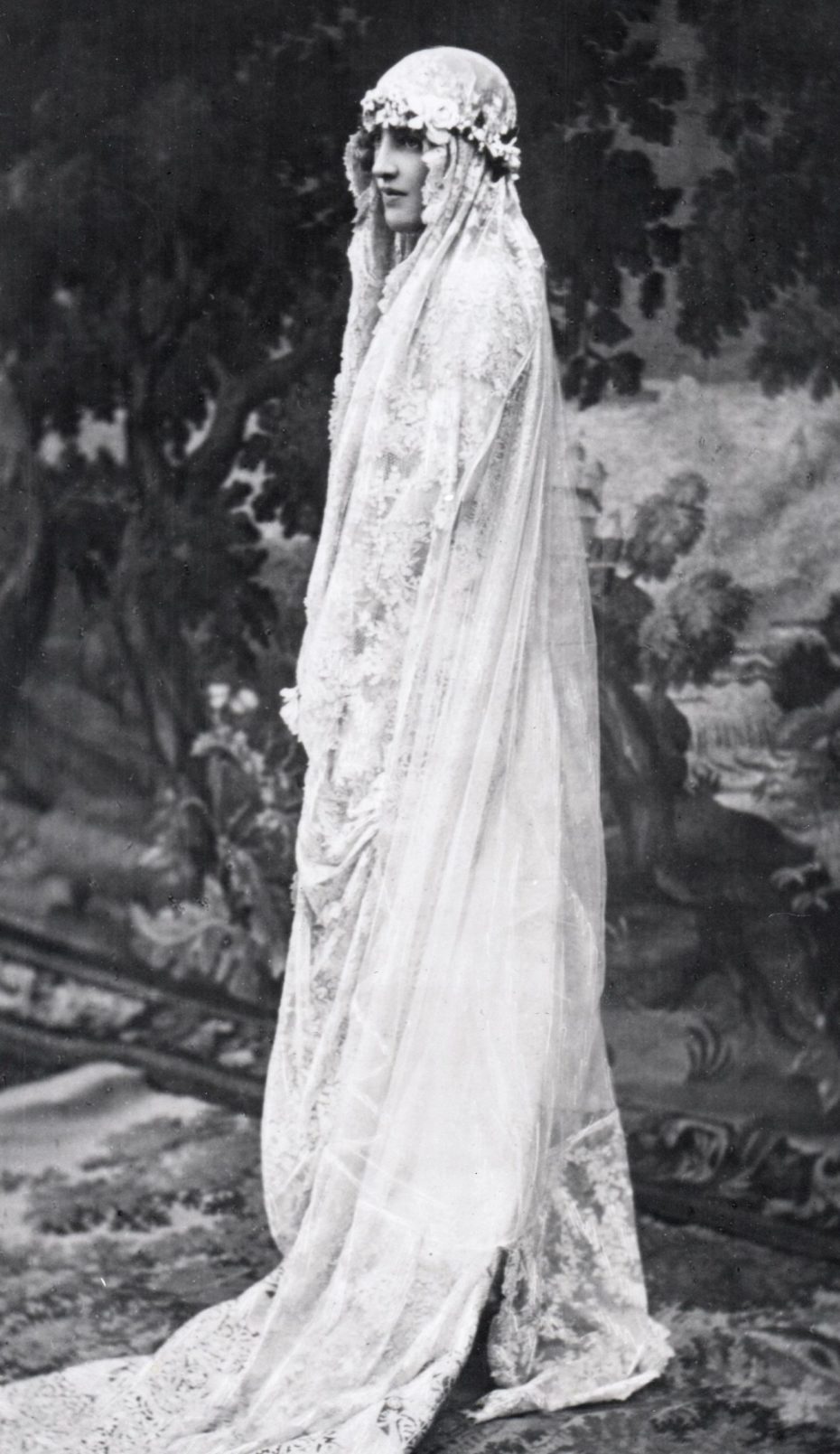
The marriage of Gladys Deacon and the 9th Duke of Marlborough is potentially one of the strangest stories. A relationship born out of obsession. Gladys was the daughter of mega-rich American socialites; her beauty and fierce intelligence left Proust and Rodin obsessed, and the upper-classes besotted. She her sights on the Duke from the age of 14. He was 10 years her senior and had appeared in the newspaper in 1895 due to his engagement, and later marriage, to the glamorous Conseulo Vanderbilt, cousin of the equally glamorous Cornelia Vanderbilt. Gladys told her mother that she had hopes of “catching him” someday by using her “women’s witchcraft”. No less than 5 years later, Gladys had moved into Blenheim Palace where Charles and Conseulo lived and managed to charm them both into friendship with her.
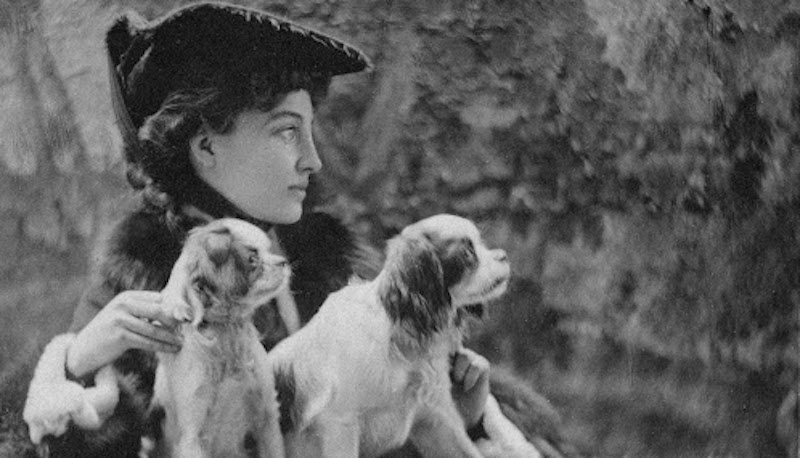
Gladys was a welcome distraction for them as their marriage was already on rocky ground. Gladys then spent the next few years courting various princes and gentlemen as well as taking the role as Charles’ mistress. Consuelo left Charles in 1906 due to the marriage being that of a mercenary one anyway, purely for money and titles. It wasn’t annulled until 1921 and within months Charles wed Gladys.
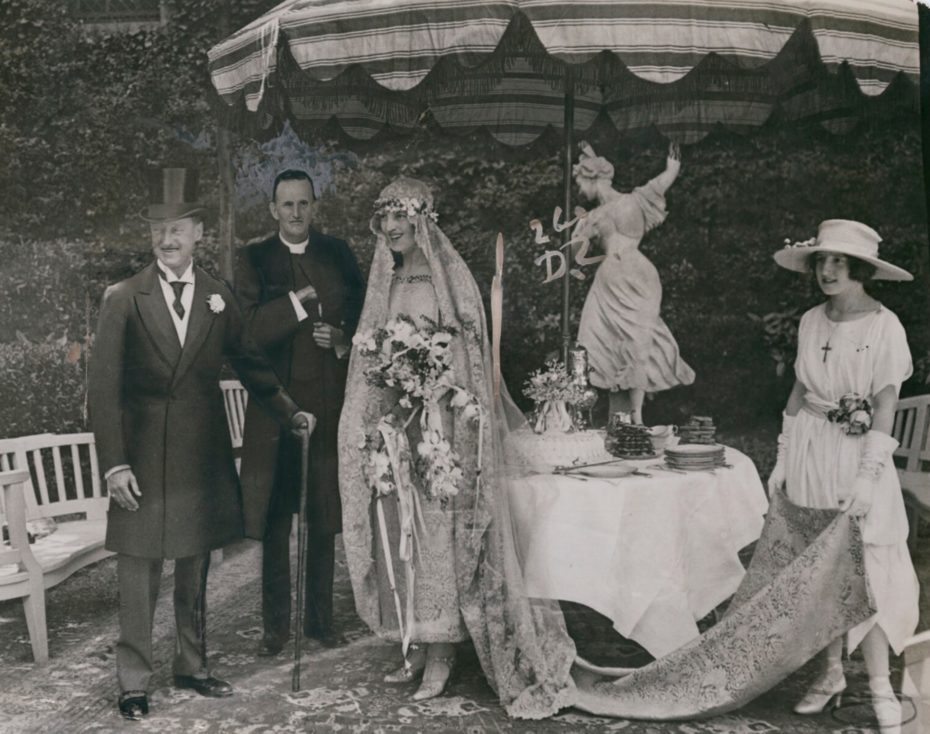
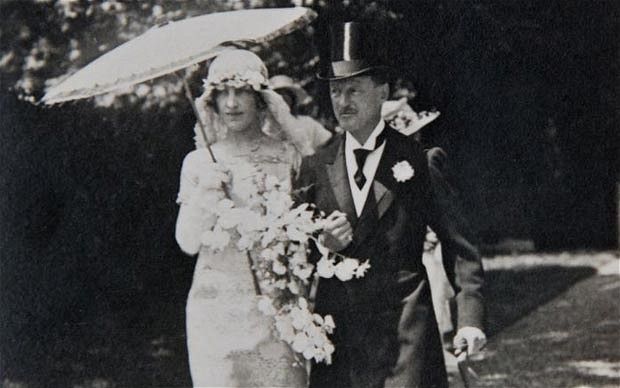
Unfortunately, although Gladys had managed to bag her dream man, their relationship was anything but perfect. Due to botched plastic surgery, Gladys became reclusive, caring only for gardening, her dogs and having frescos of her beautiful eyes painted on the ceilings at Blenheim Palace.
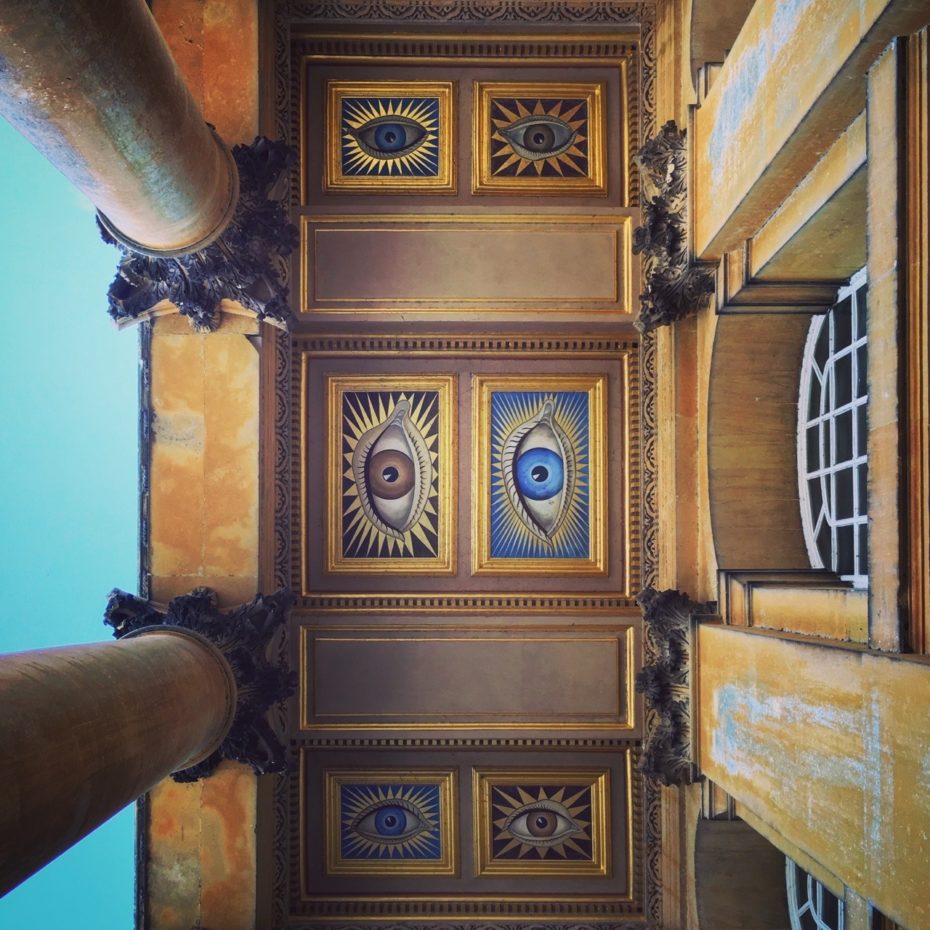
The destruction of her previous beauty, mixed with the sorrow of three miscarriages and the boredom that accompanied her withdrawal from polite society was the recipe for Glady’s inevitable depression. Too late she realised that her husband was a snob and a bore of the worst order, so she drifted aimlessly about the palace in a melancholic state for the best part of a decade. Charles’ attitude towards Gladys became cruel, stating to anyone that would listen that his wife was insane. Soon Gladys began keeping a gun in her bedside table should Charles’ ever attempt to claim his husbandly rights.
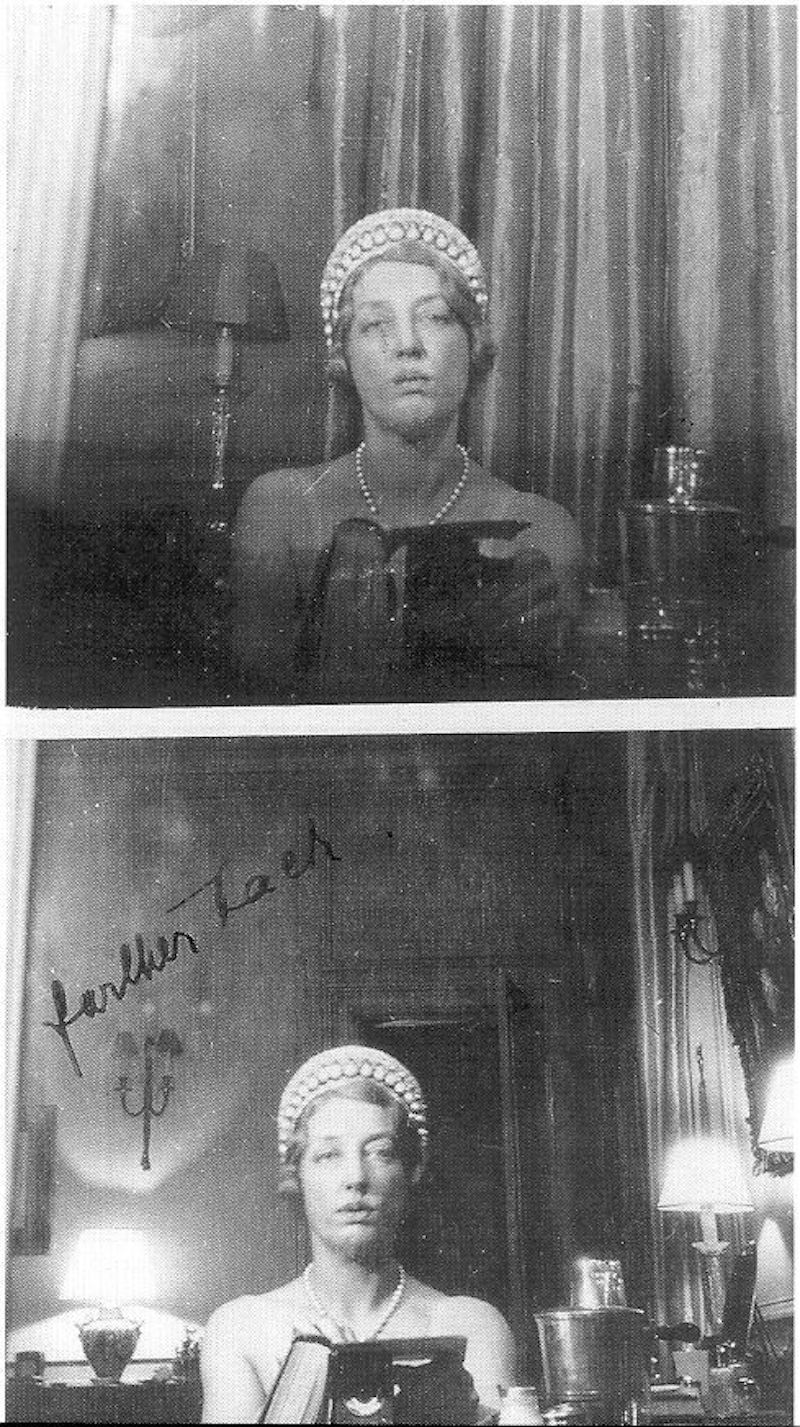
Gladys eventually started divorce proceedings but Charles died before it could be accomplished. Gladys, sadly, never recovered from her depression and continued living as a recluse until the age of 96.
Prince Albert, Duke of York, and Lady Elizabeth Bowes-Lyon
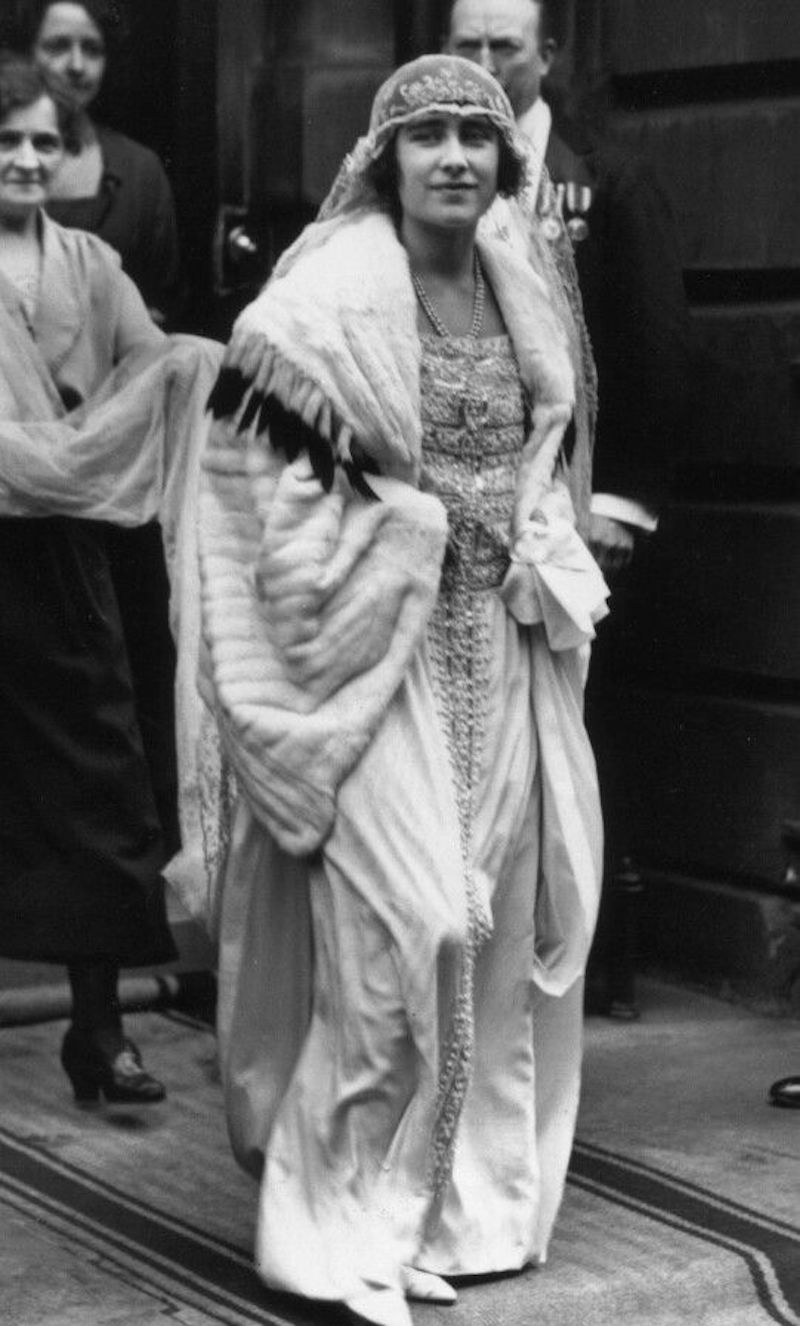
It’s almost impossible to talk about elaborate weddings without mentioning at least one genuine royal wedding, so we take a moment to reflect on the nuptials of Bertie and Elizabeth, parents to the reigning monarch of England, Queen Elizabeth II.
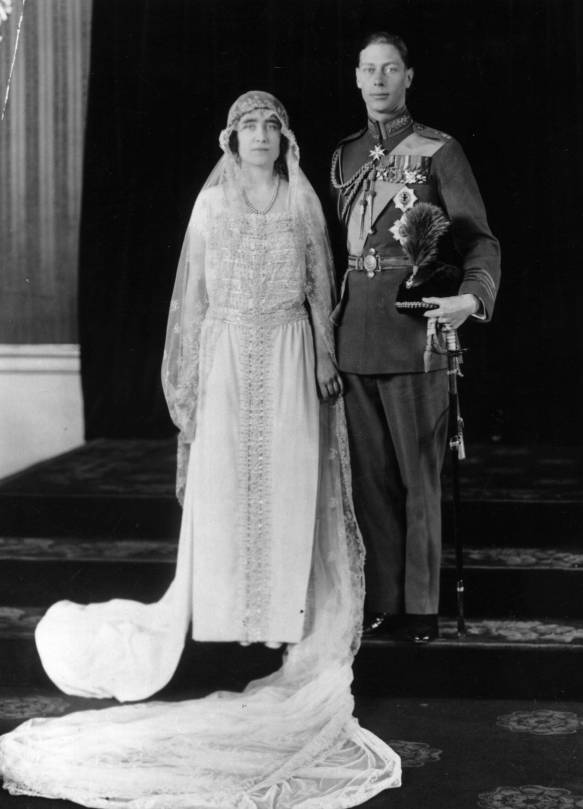
They tied the knot in usual royal fashion at Westminster Abbey, with all the tradition that accompanies royal protocol. Instead of glitz and glamour of the American weddings mentioned previously, pomp and ceremony were the order of the day.
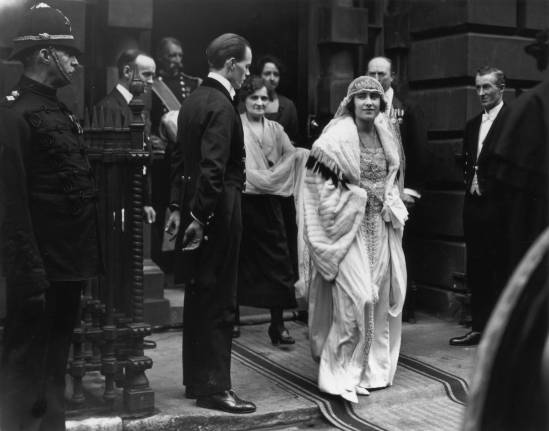
As with most royal celebrations, information is recorded meticulously about every aspect, so intricate details about Elizabeth’s dress still survive. Designed by Madame Handley-Seymour (a Blackpool-girl-come-good as the head designer to Queen Mary) Elizabeth’s gown was unequivocally a product of the time, made from deep ivory chiffon moire, embroidered with pearls and a silver thread. A strip of Brussels lace, inserted in the dress, was a Strathmore family heirloom. A female ancestor of the bride wore it to a grand ball for “Bonnie Prince Charlie”. The silver leaf girdle had a trail of spring green tulle, trailing to the ground; a silver and rose thistle fastened it. The dress had two trains: “one fastened at the hips, the other floating from the shoulders”.
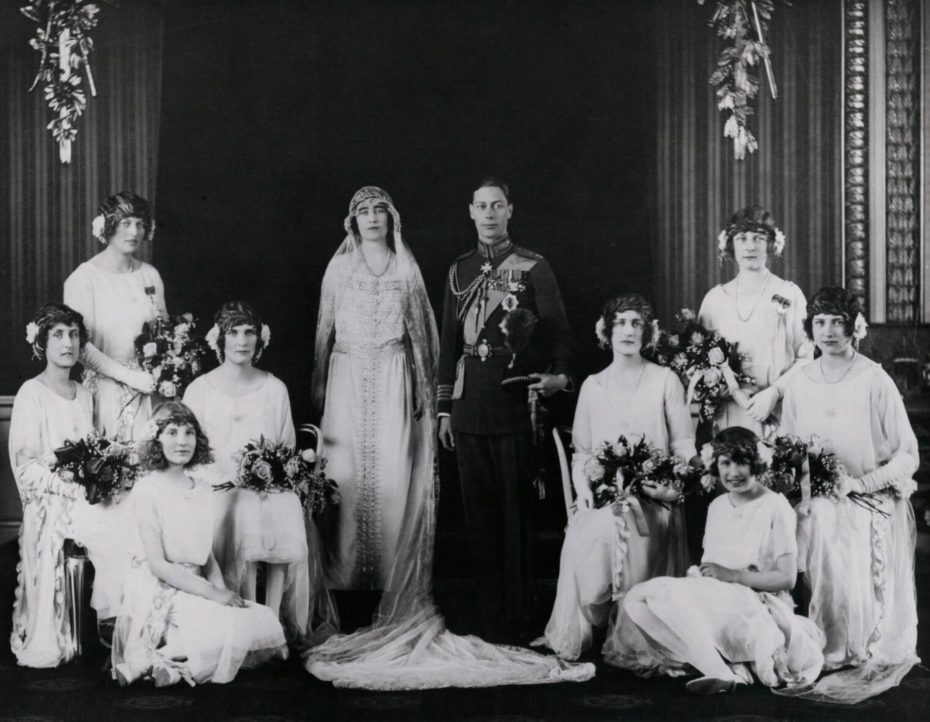
Twelve years later, Bertie was to face a critical moment in his life, when his brother, David, aka King Edward VIII, shockingly abdicated the throne after a mere 5 years. Within a year, Bertie ascended the throne as King George VI, taking Elizabeth with him as his Queen.
Buster Keaton & Natalie Talmadge
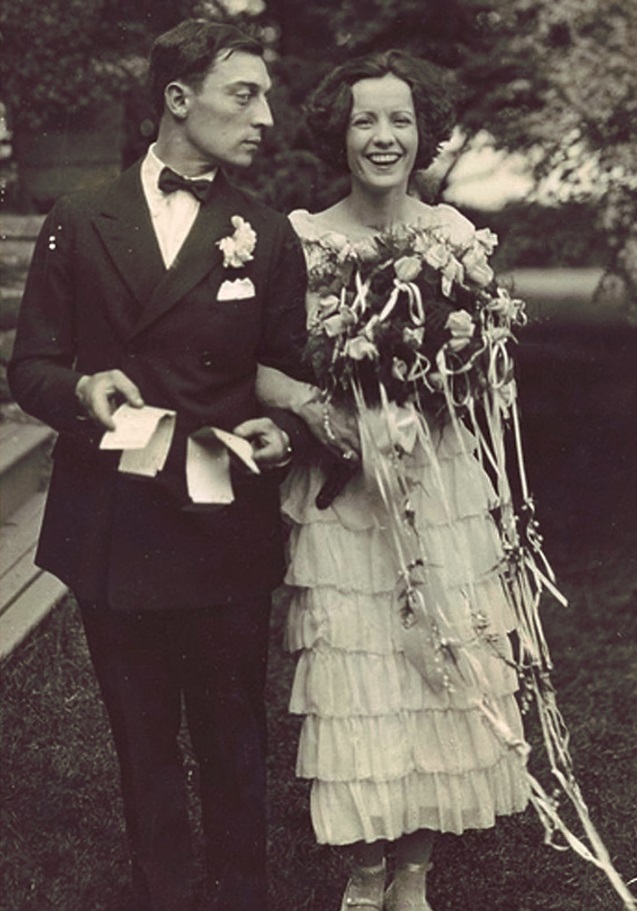
Back across the pond, Buster & Natalie were hitched in the golden glow of Buster’s epic career in silent films. Their marriage fell on rocky ground eventually with Buster’s movie contracts expiring and both subsequently falling into alcoholism.
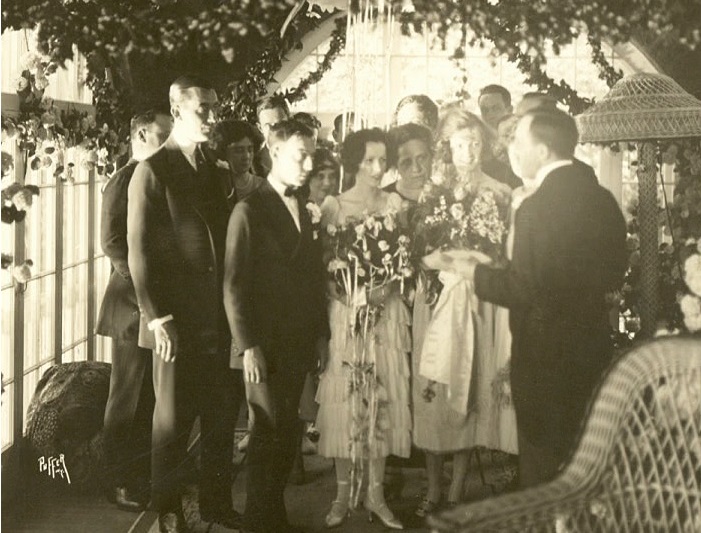
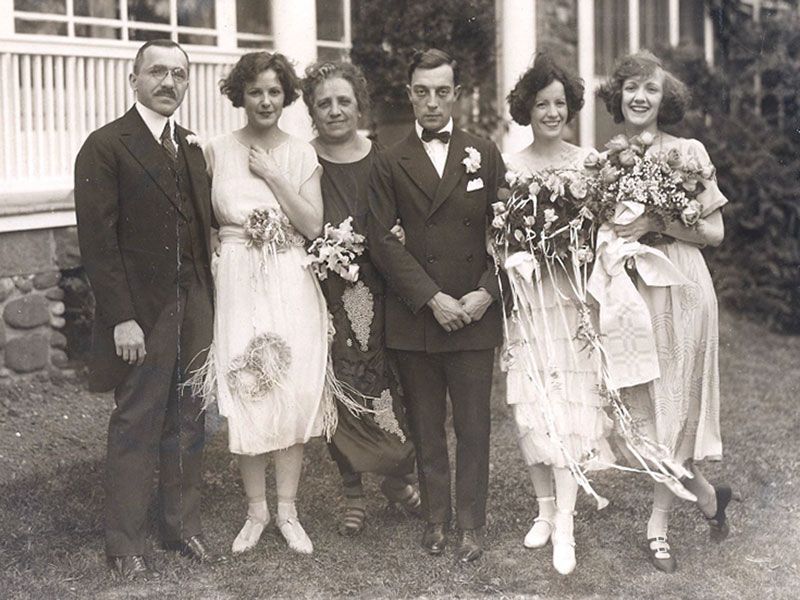
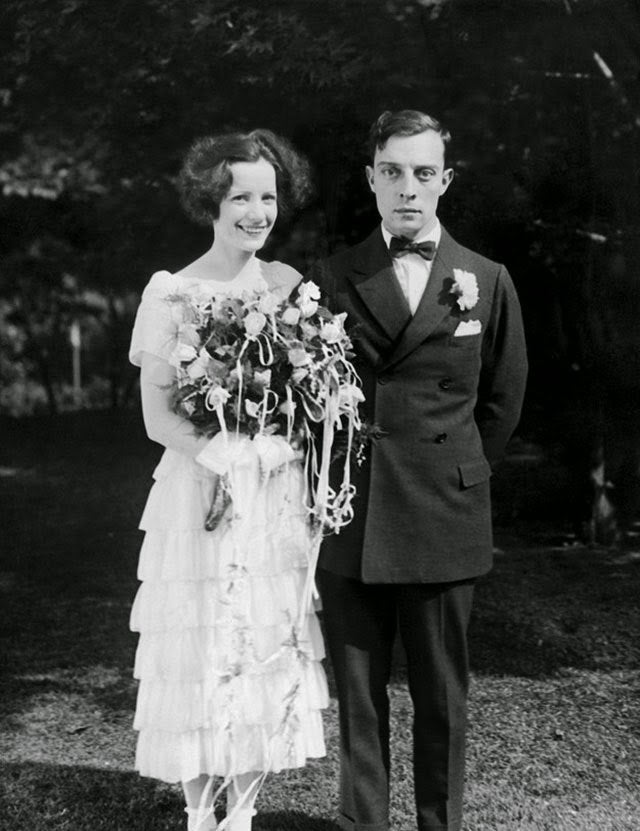
James Van Der Zee’s Harlem Renaissance Wedding Album
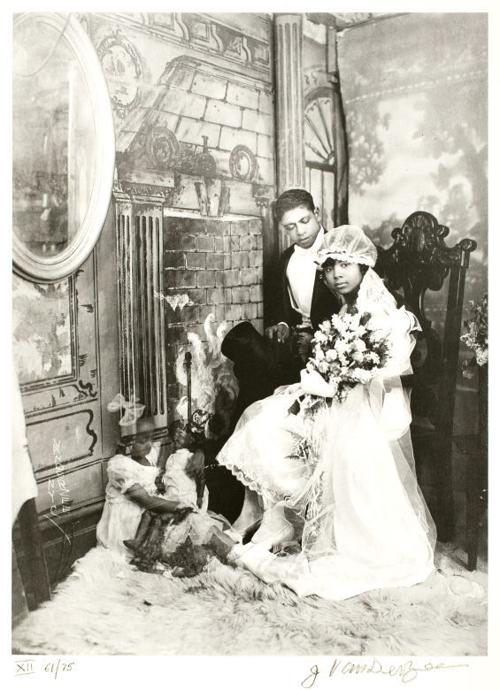
There are no surviving photographs of James Van Der Zee’s own marriage to Gaynella Greenlee in 1920, but it could potentially be because James himself was one of the most proficient portrait photographers in Harlem of his generation. Who would you get to photograph a photographer? Above, a newly married couple are pictured in James Van Der Zee’s elaborate studio set up, complete with ghostly apparition of a child, meant to artistically depict children in the couples future,
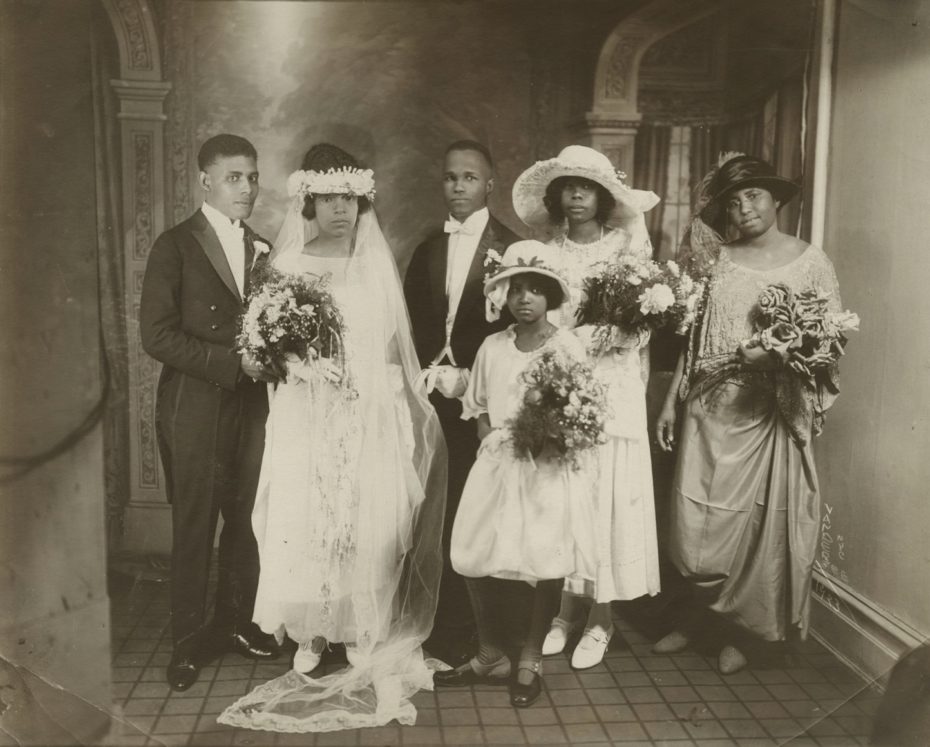
In his lifetime he left a legacy of studio portraits of the newly emerging black middle-class in New York, amongst which were elegant images of newly married couples who would visit his studio a few days after getting married to commemorate the grand occasion. James was a leader in the Harlem Renaissance and it’s not hard to see why.
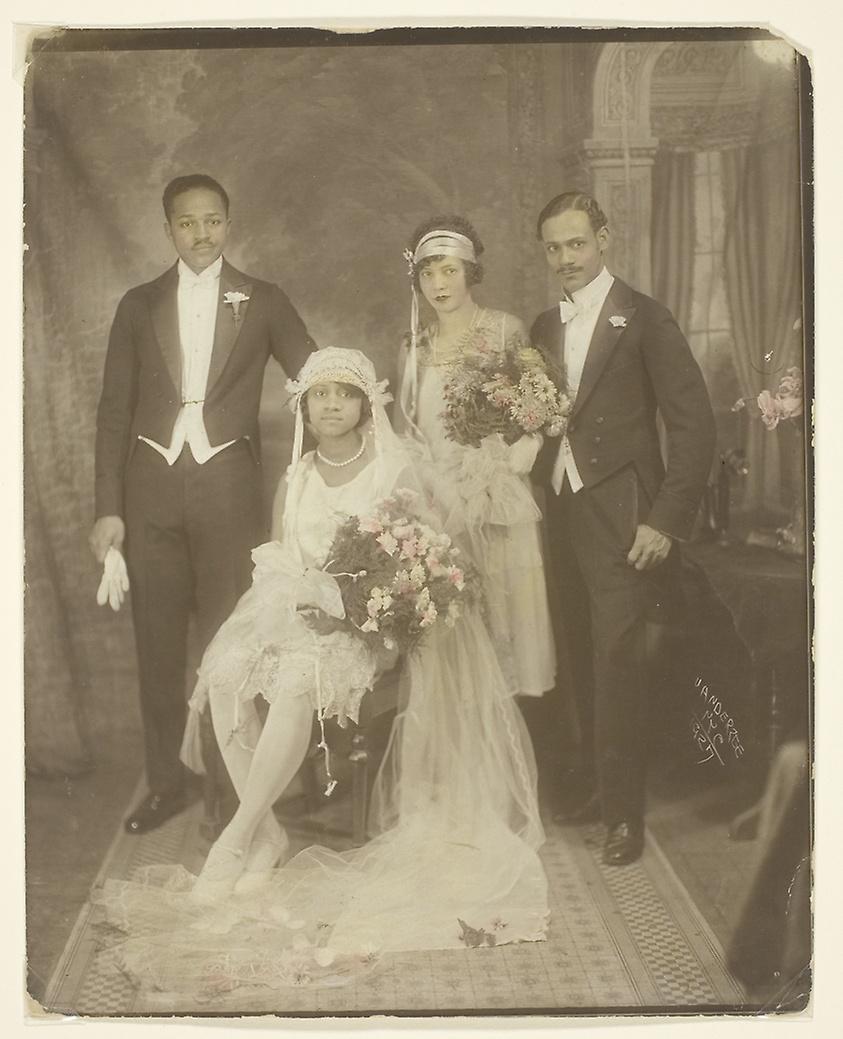
Using brand new editing techniques, James captured his subjects in traditional formats to achieve stylised “tableaux vivants”, otherwise known as “living portraits”, where the subjects are posed to create a static scene, using backdrops and props for a theatrical effect. Married couples flocked to his studios throughout the early part of the century, particularly in the affluent 1920s when everyone wanted to look like a celebrity. But when the Depression hit, expensive portraiture was not deemed a necessary commodity and by the 1940s personal cameras eliminated the desire for elaborate studio photoshoots.
Alfred Hitchcock & Alma Reville
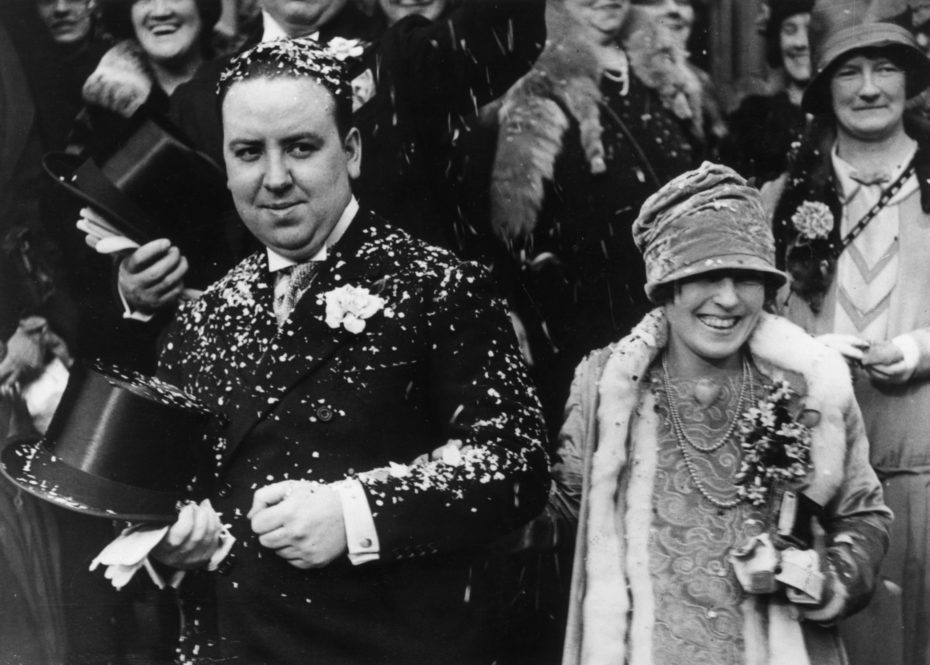
Something that is seen quite rarely in Hollywood is a successful marriage, but Alfred and Alma found the recipe for it by not only being a devoted couple, but also a creative partnership. It is often said that, with Alma being a talented screenwriter and director herself, whenever a Hitchcock movie hit the big time “the Hitchcock touch had four hands, and two were Alma’s.” Unfortunately, Alfred’s success did tend to eclipse Alma’s, but when Alfred accepted a lifetime achievement award in 1979, he said he wanted to mention “four people who have given me the most affection, appreciation and encouragement, and constant collaboration. The first of the four is a film editor, the second is a scriptwriter, the third is the mother of my daughter, Pat, and the fourth is as fine a cook as ever performed miracles in a domestic kitchen. And their names are Alma Reville.” Her name may not be as known, but her effect on Hollywood is still felt today.
Diana Mitford & Bryan Guinness
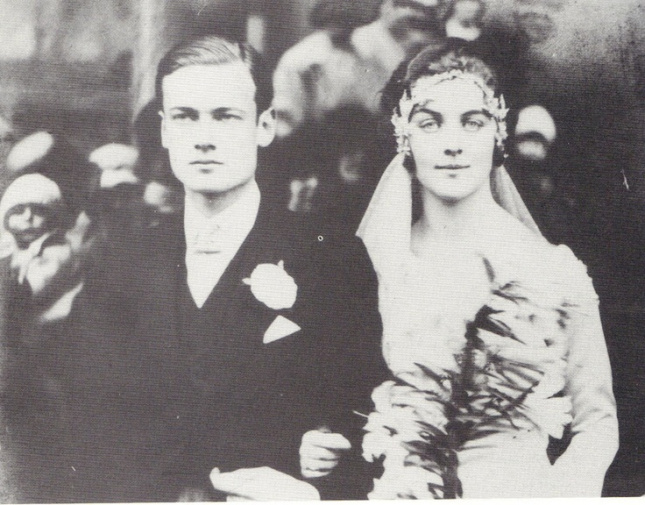
Potentially one of the most controversial additions to this list is one of the infamous Mitford Family. Diana was, for intents and purposes, a fascist, with now well-documented political leanings towards the hard right and friendships with Adolf Hitler and Jospeh Goebbels (she was married in Goebbels’ house to her 2nd husband during WWII, kept a portrait gifted to her by Hitler in her possession and her jewellery collection contained a diamond encrusted Swastika).
But prior to her dalliance with the Nazi regime, she met and married an Irish aristocrat and heir to a brewing dynasty, Bryan Guinness in 1929. With their large combined wealth, multiple homes and penchant for free-thinking, Diana & Bryan hosted many elaborate events including fancy dress parties and treasure hunts, attended by the cream of society of the day, the “Bright Young People”.
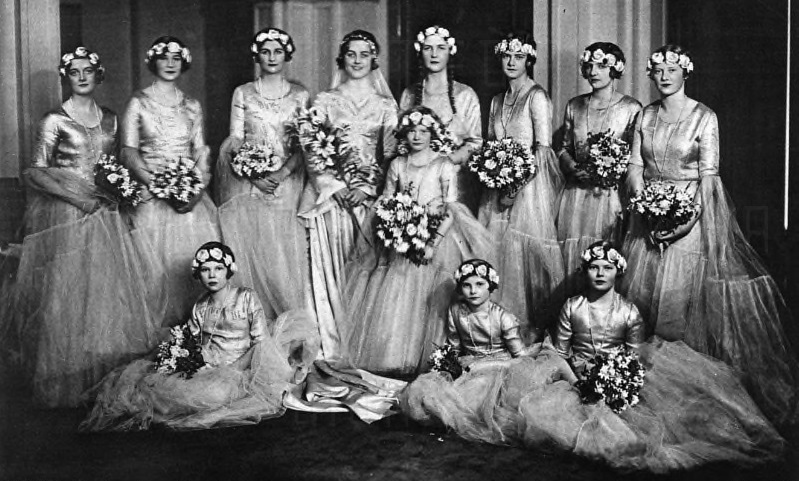
The Bright Young People consisted of socialites who practised a Haute Boheme lifestyle, with unorthodox political and social viewpoints and a love for the arts and free-love. Many novels and movies were written about this era in time and this group of people, such were their complicated and serpentine relationships.
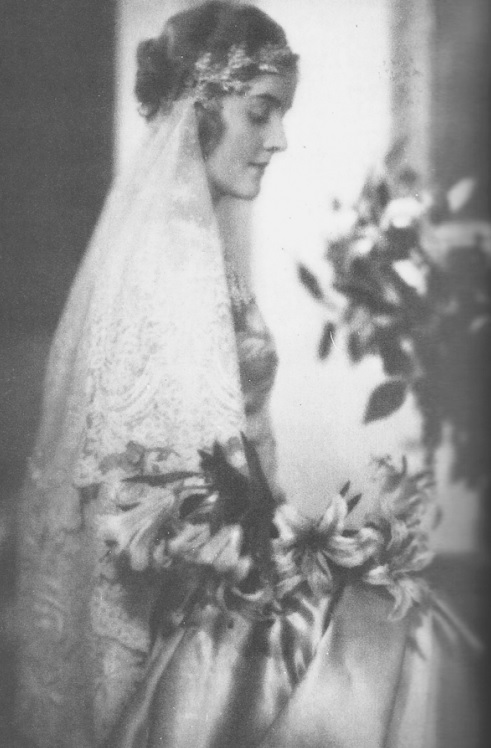
Dolores Costello & John Barrymore
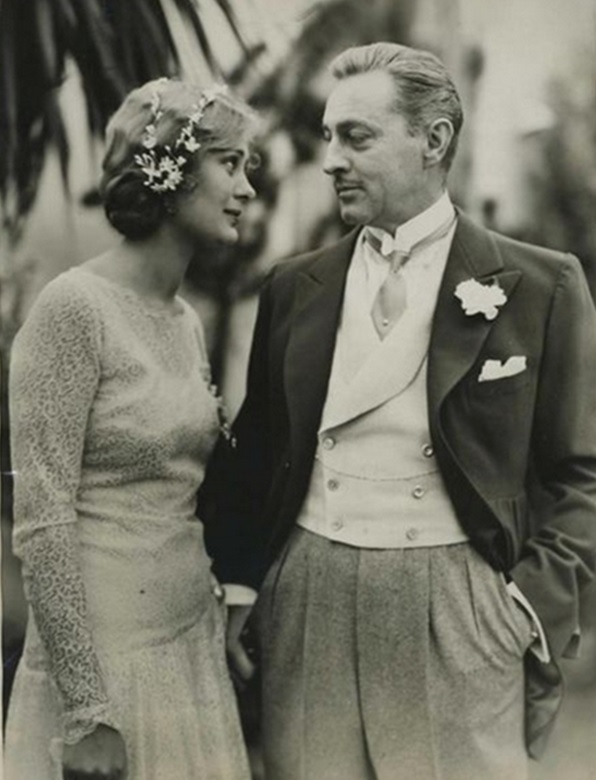
Some Hollywood family legacies have ties in the movie business that go right back to the very start. Dolores and John were both big stars in the cinema firmament during the 1920s, and met while playing opposite one another in a few blockbusters. They soon married in 1928. From their union were 2 children, one being John Barrymore Jr who is father to well-loved present-day actress Drew Barrymore. Dolores’s own father was a behemoth in the history of Hollywood, noted to have starred in what is regarded as the first serious attempt to portray a Sherlock Holmes storyline via cinematography in 1905.
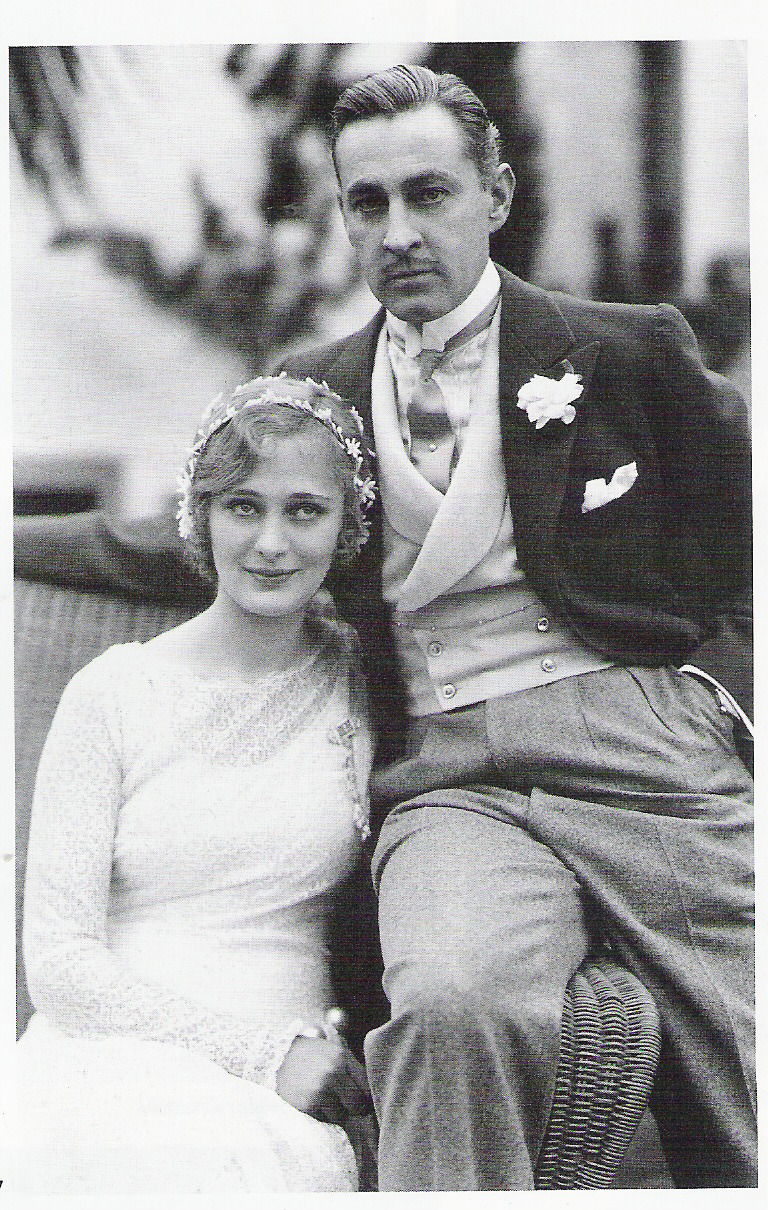
Dolores and John Sr’s relationship was short due to the inevitable alcoholism that seemed to taint most celebrity relationships of the time, as well as the downfall of Dolores’s movie career when her insecurities over her severe lisp put to bed any hopes of continuing her work in the new “talkies”. Early makeup techniques for film had also ravaged her complexion to the point where make up would no longer cover the damage to her skin. After Dolores’s 2nd marriage she went on to live a reclusive life managing an avocado farm.
Max Linder & Helene Peters
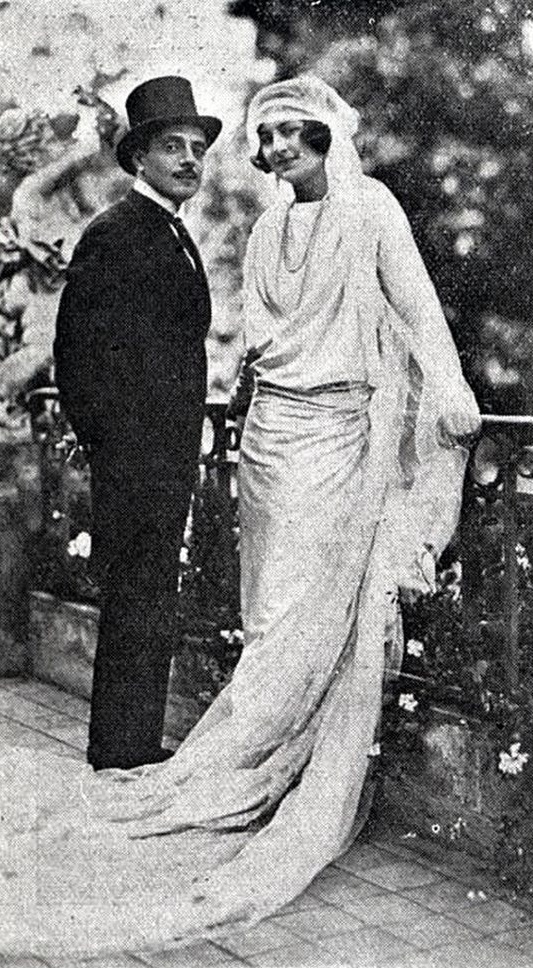
In what is perhaps the saddest tale of a 1920s Hollywood wedding, Max Linder and his young wife Helene were victims of a suicide pact. Max was injured multiple times when serving in WWI which affected him physically and mentally, which directly contributed to his chronic depression throughout his life.
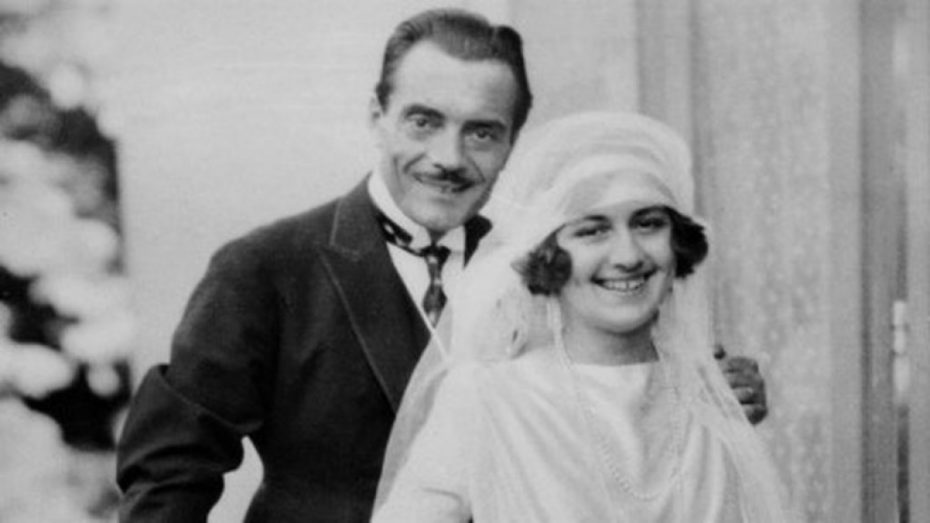
He would draw on this when depicting his silent movie characters, going on to win awards for his tragic portrayals. He and his wife attempted joint suicide twice, only successful in their pursuit after copying a tactic shown in a movie at a premiere they attended together in Paris. No one was sure whether Helene was complicit or pressured into the deal. They left behind a young daughter, Maud, who only discovered her true parentage 20 years later, after which she spent years making her fathers works accessible to the public once again and writing documentaries and movies about his life.
To wrap up the party on a lighter note, we’ll leave you with a brief compendium of snapshots of the loveliest 1920s weddings in the hopes that they might inspire a few brides-to-be in these unprecedented times…
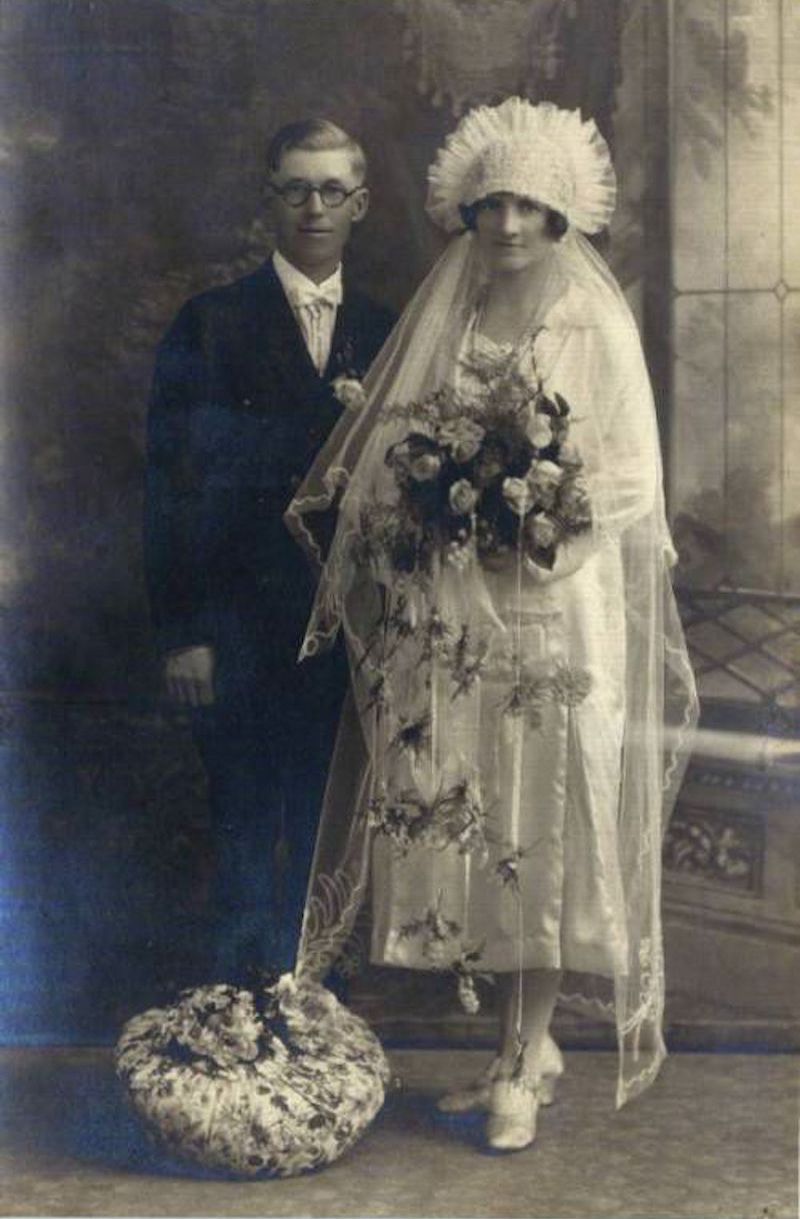
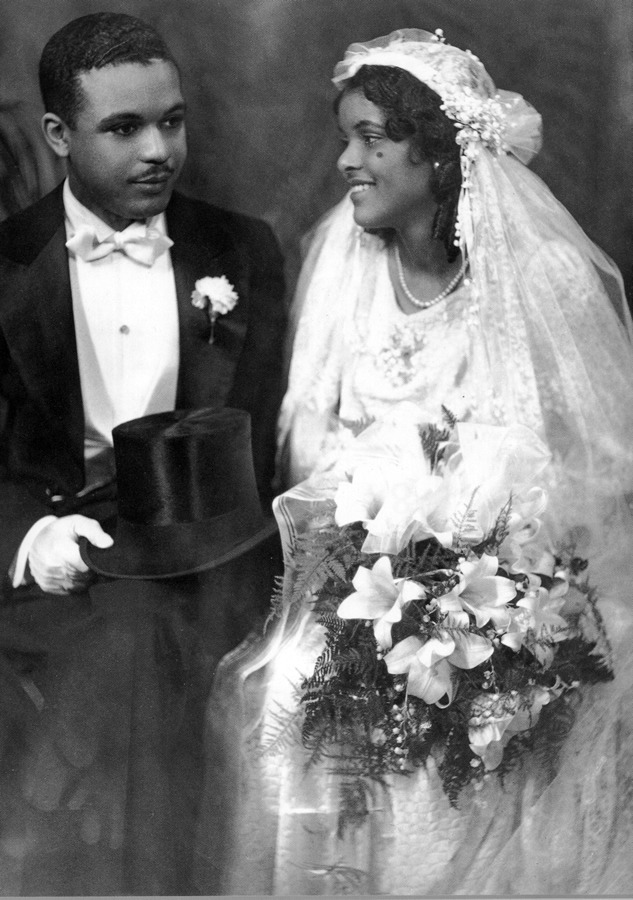
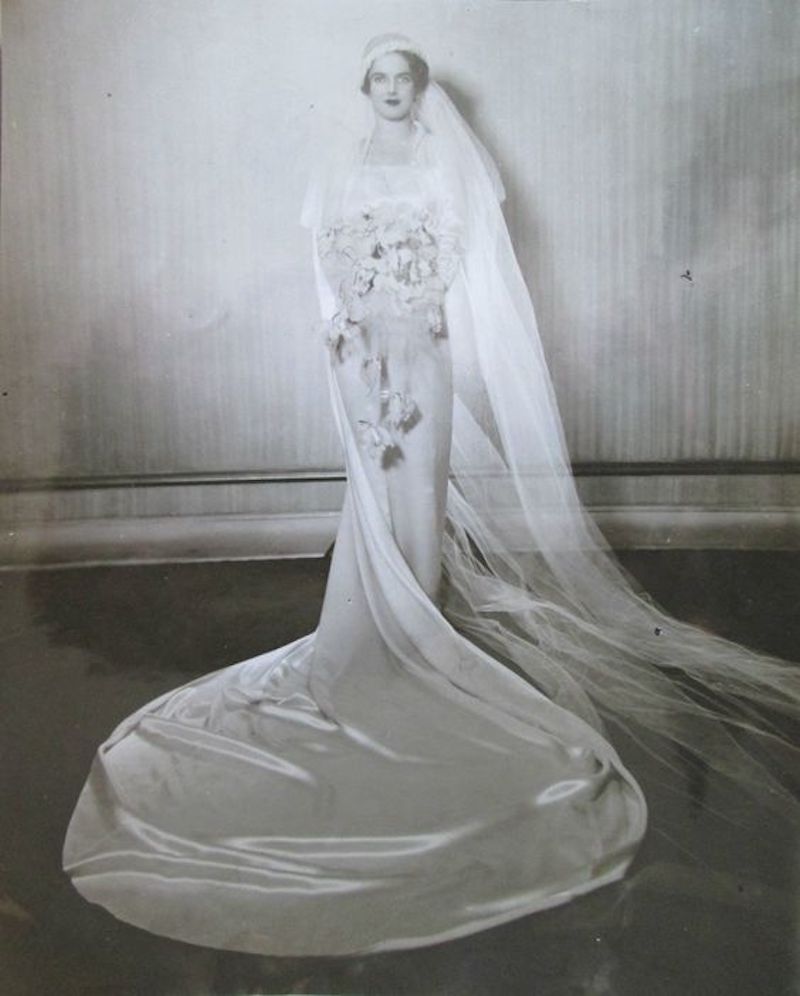
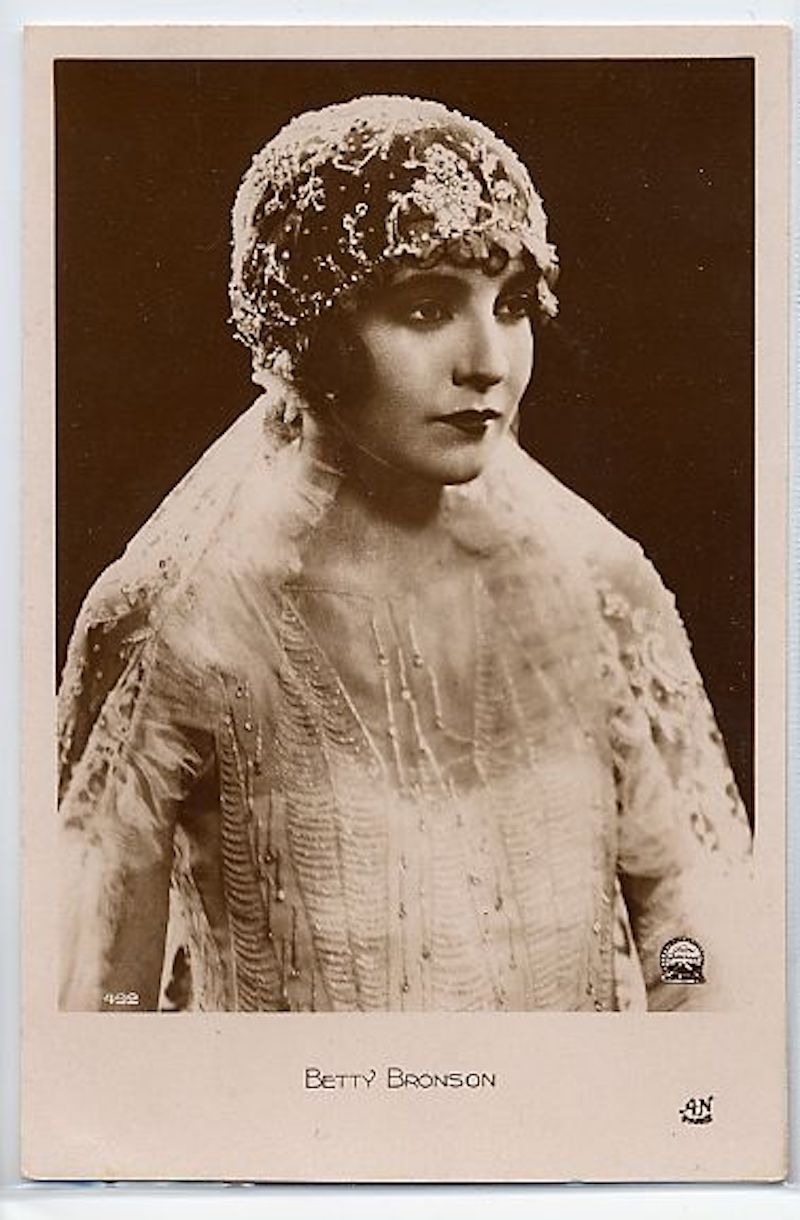
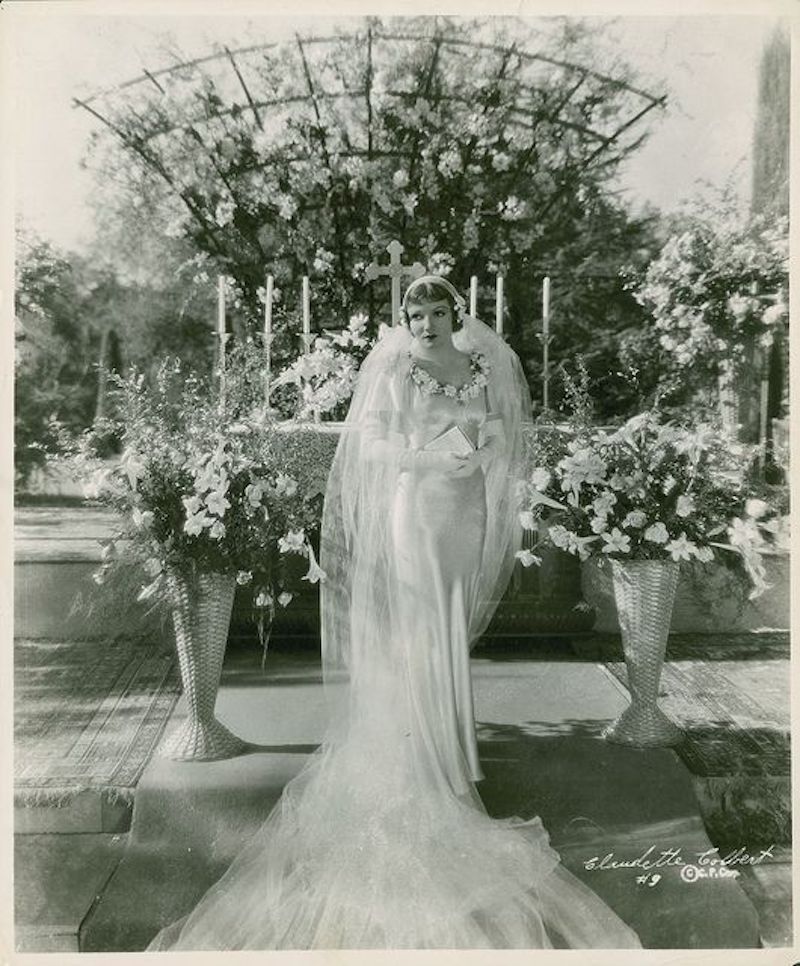
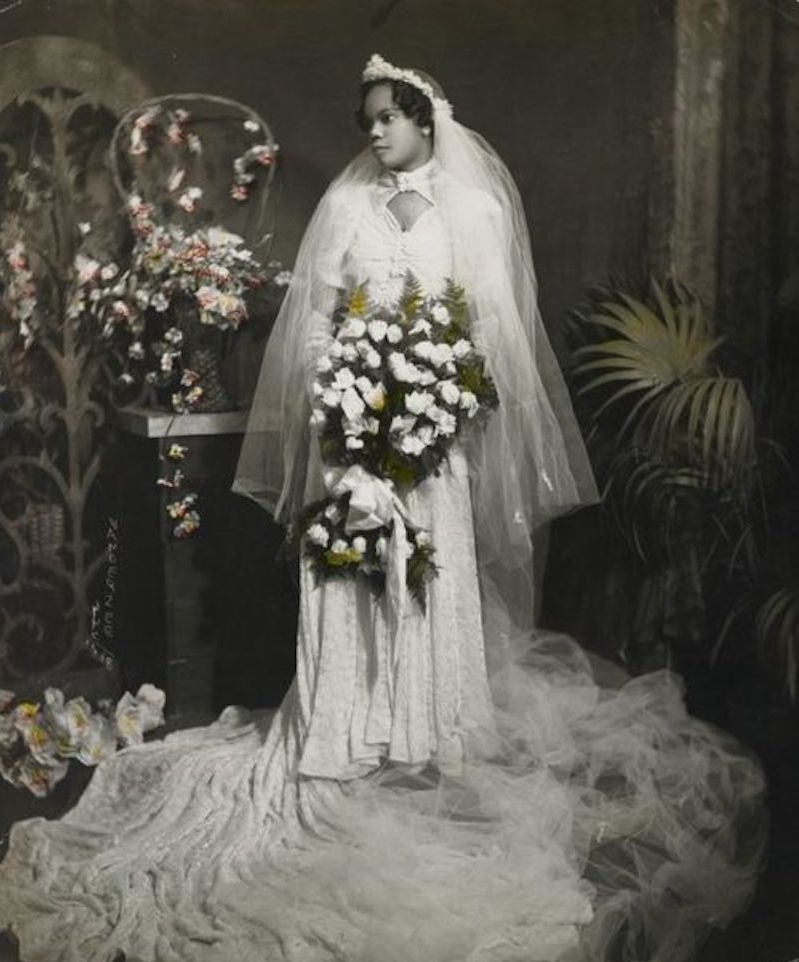
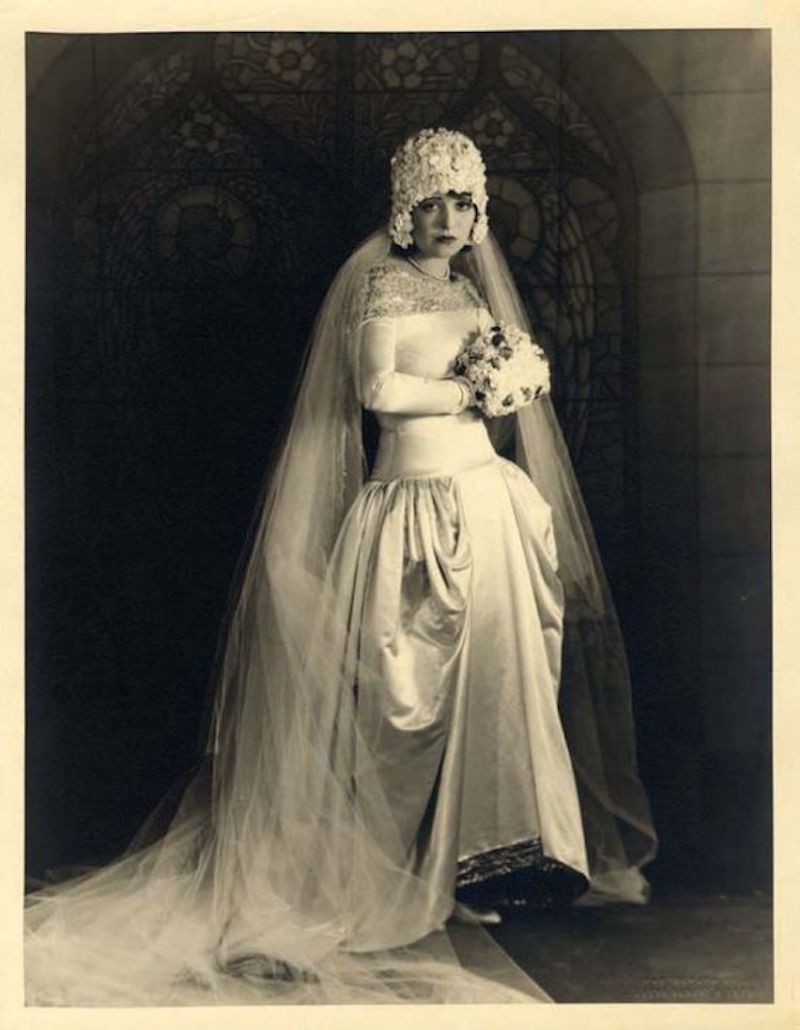
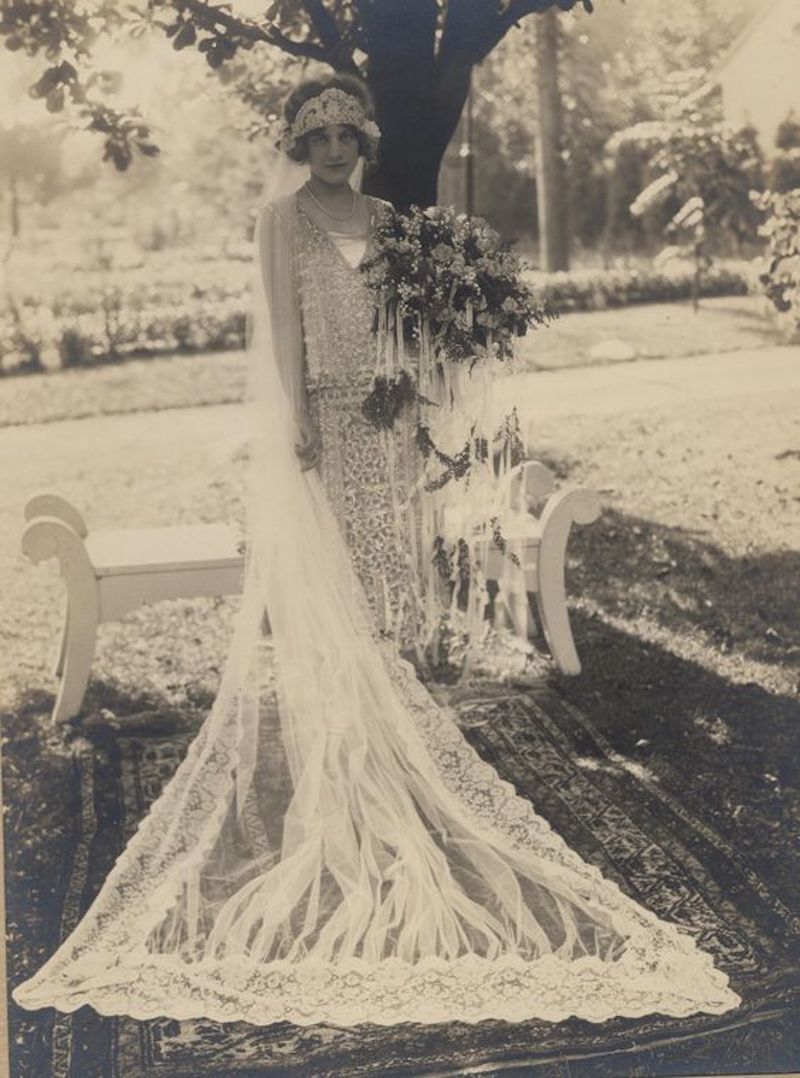
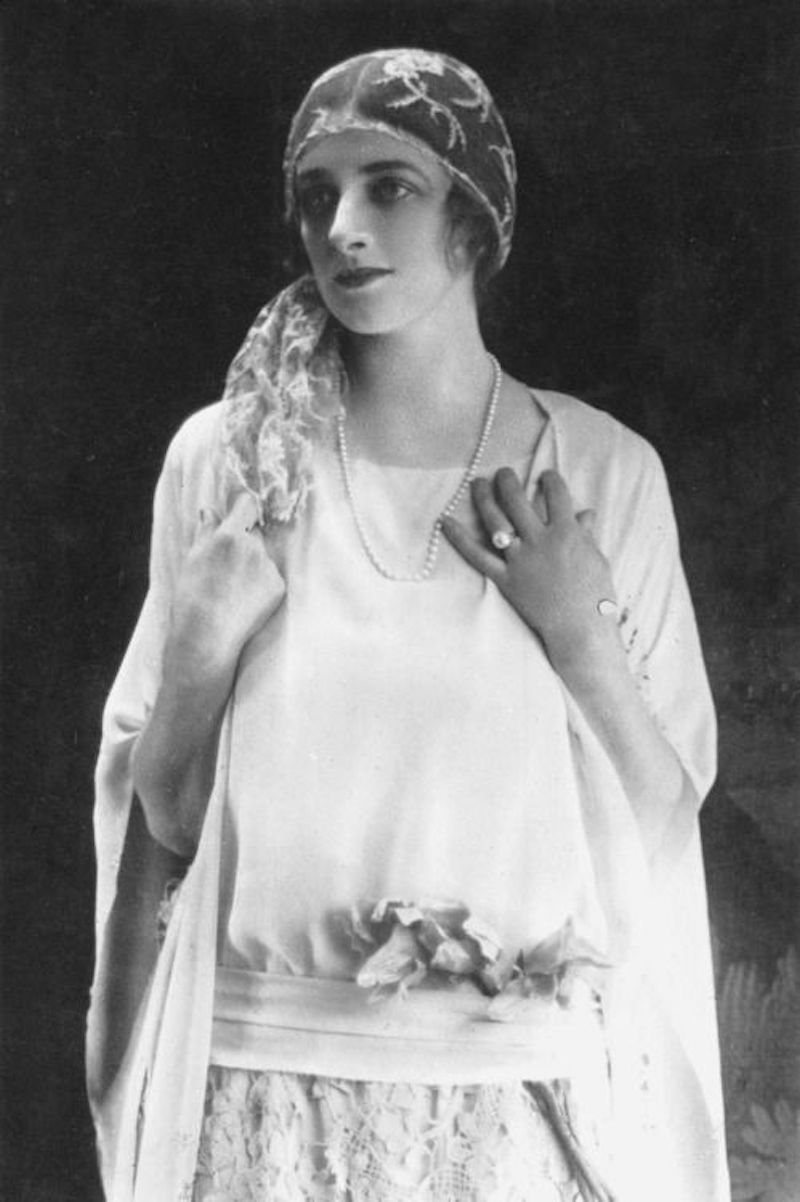
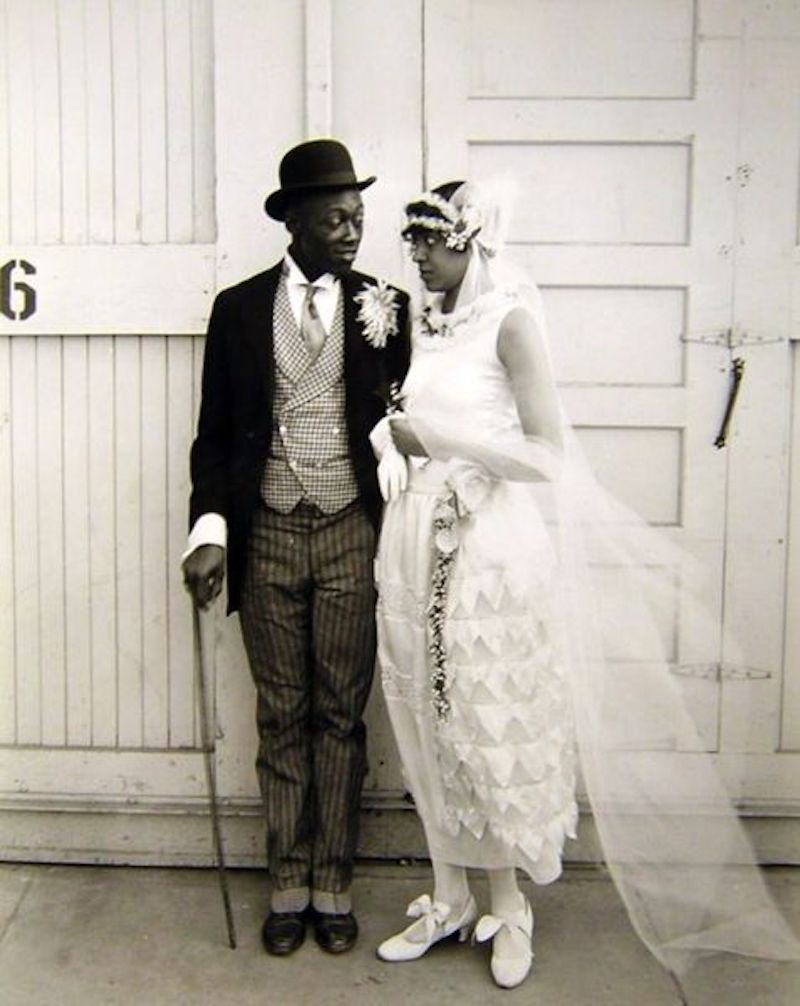
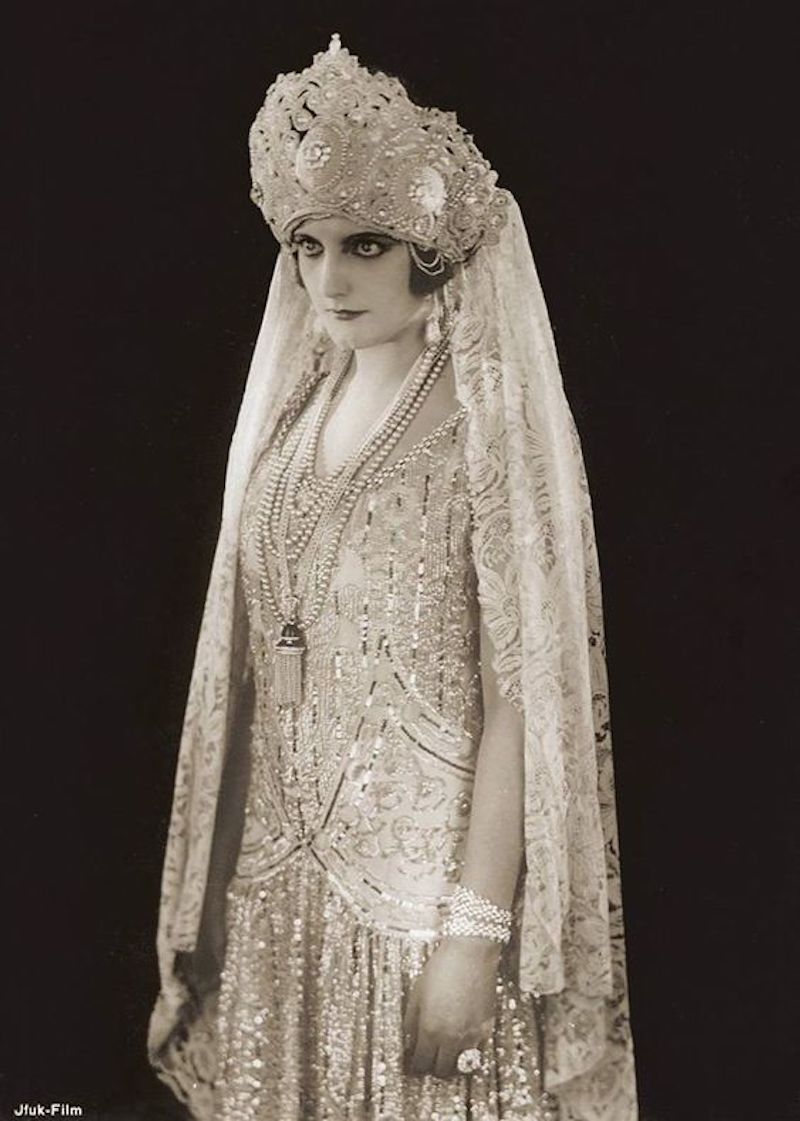
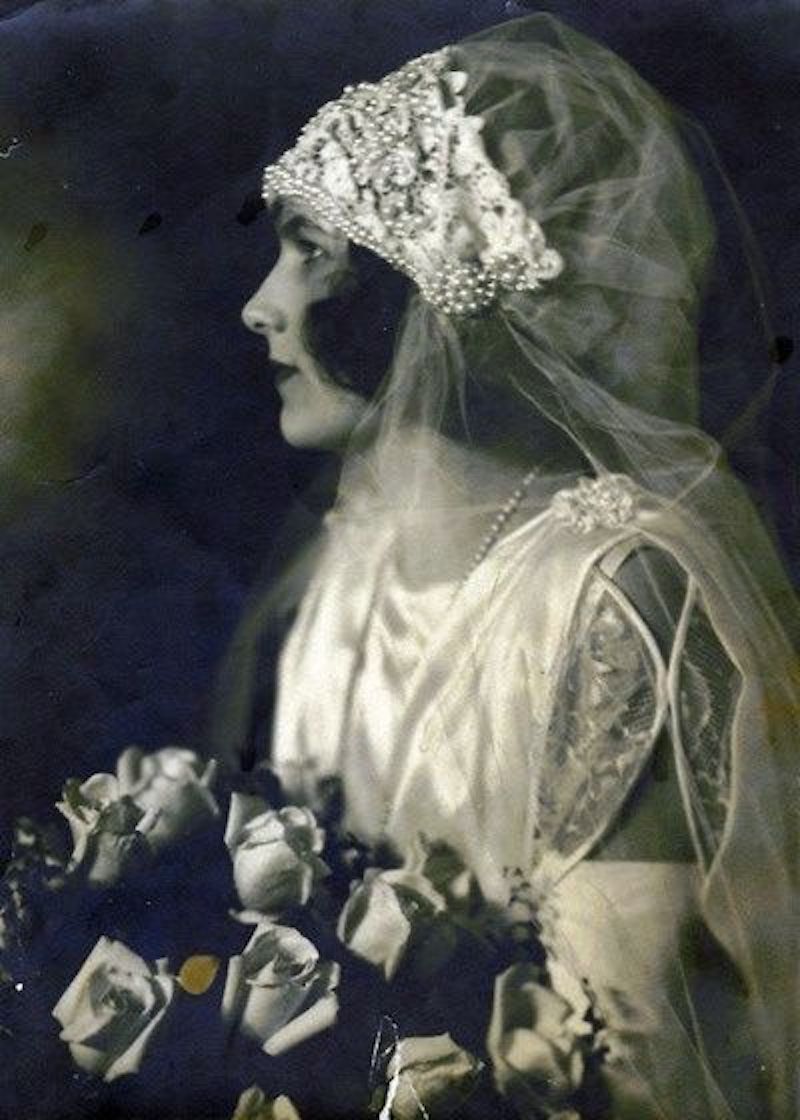
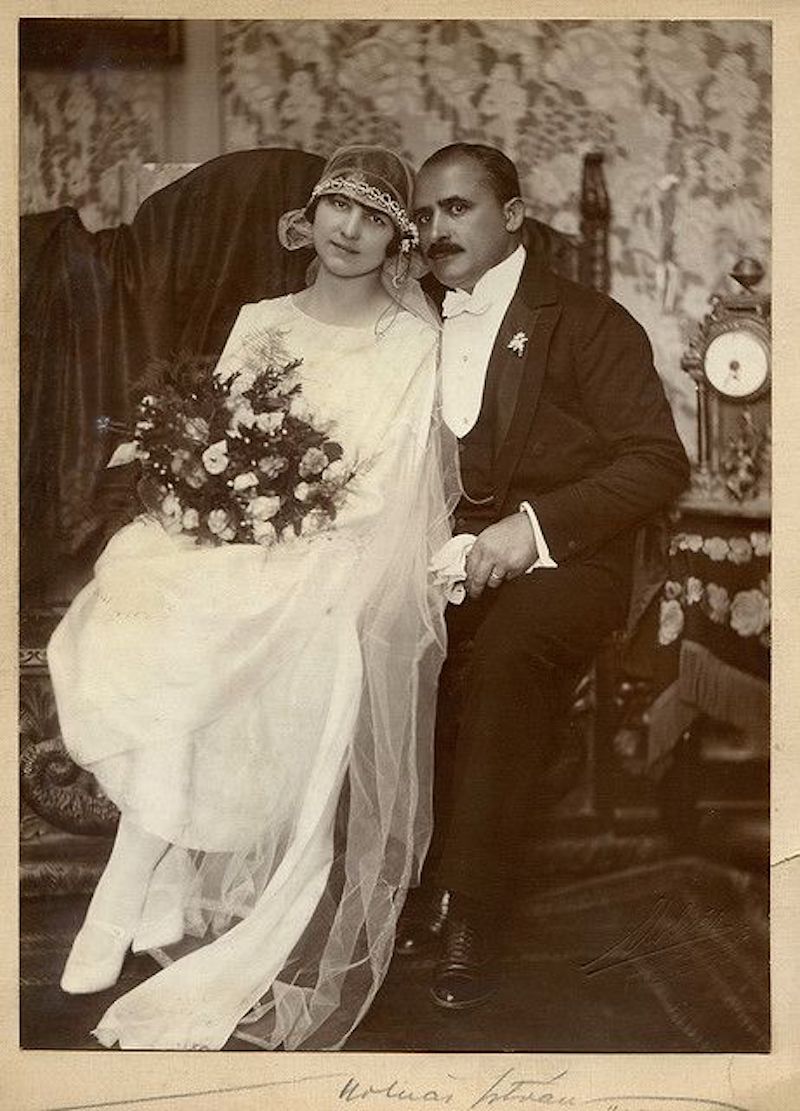
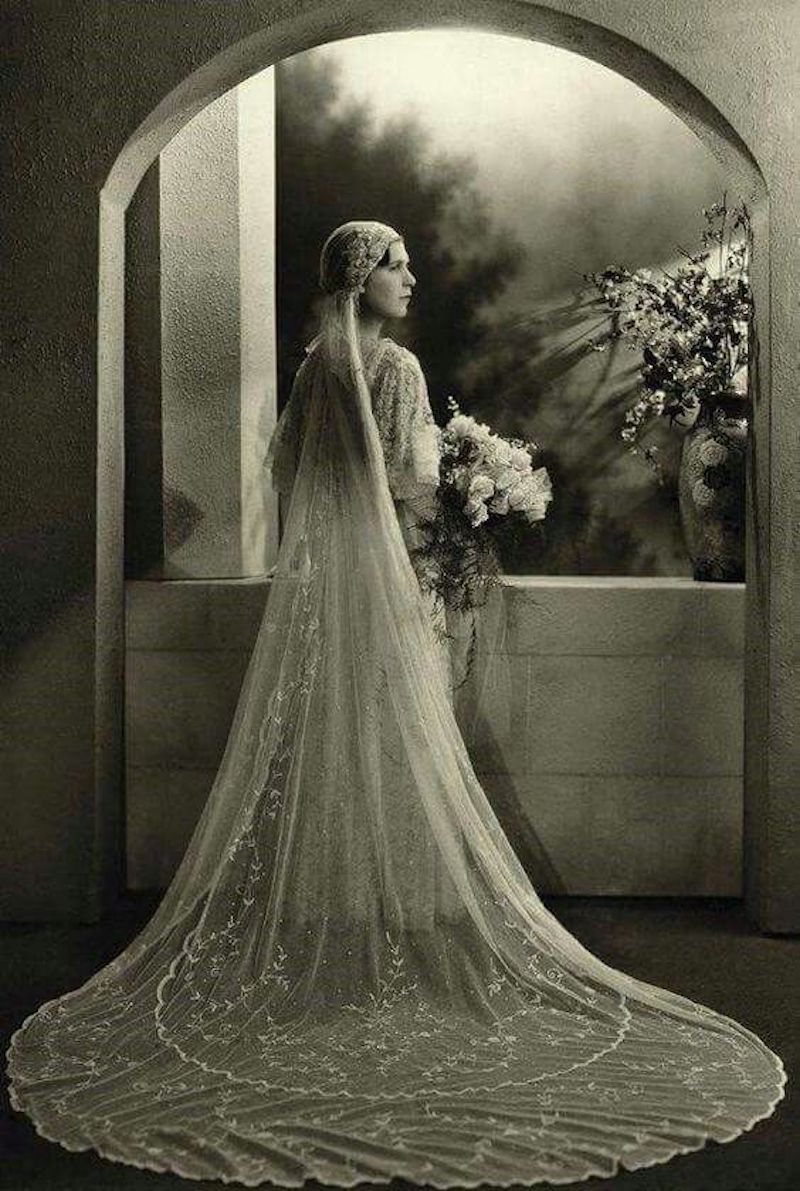
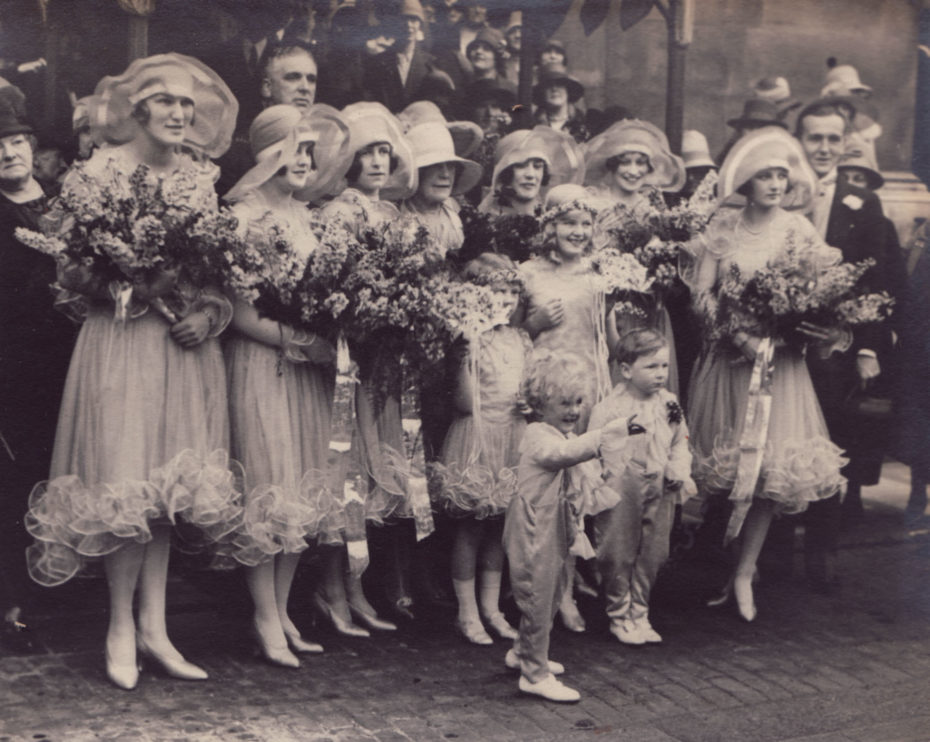
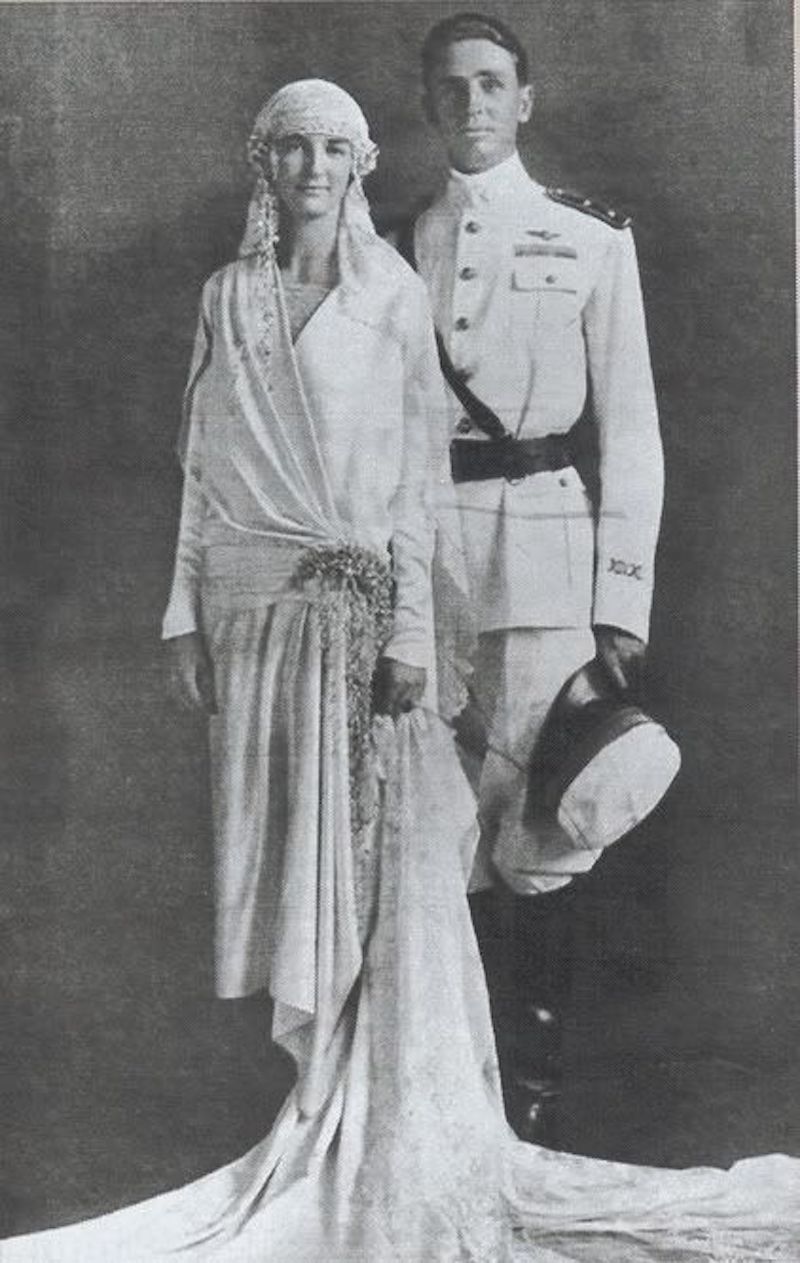
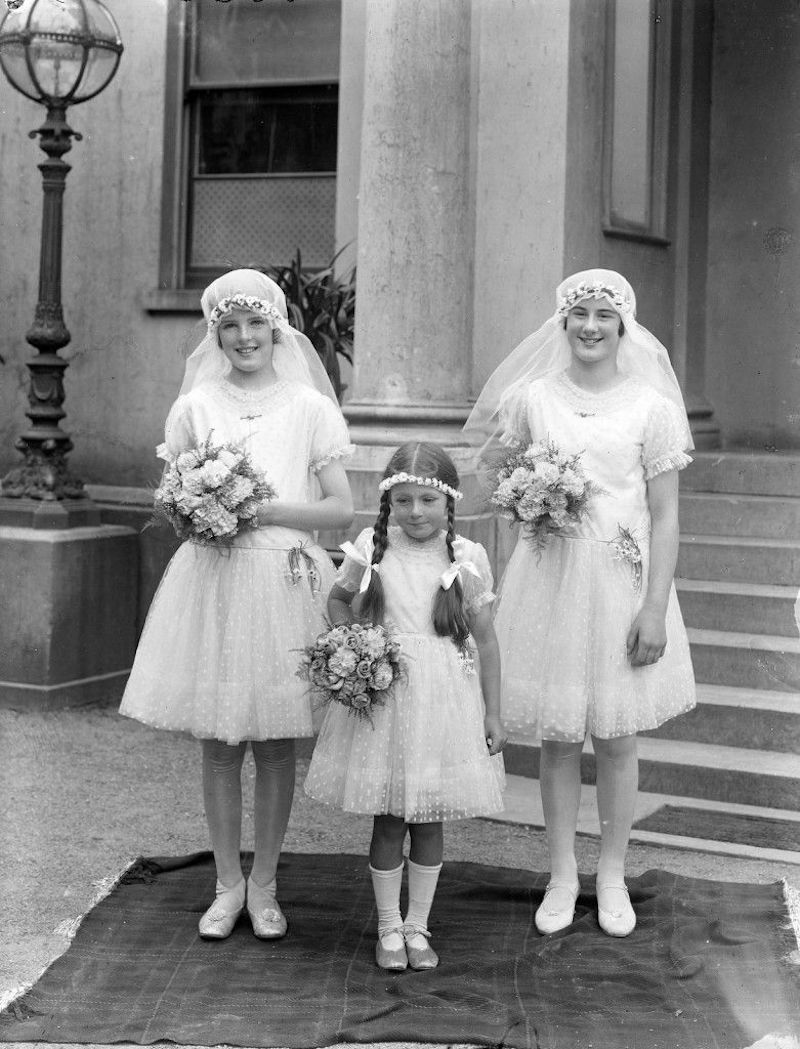
Archive wedding imagery via Pinterest.




